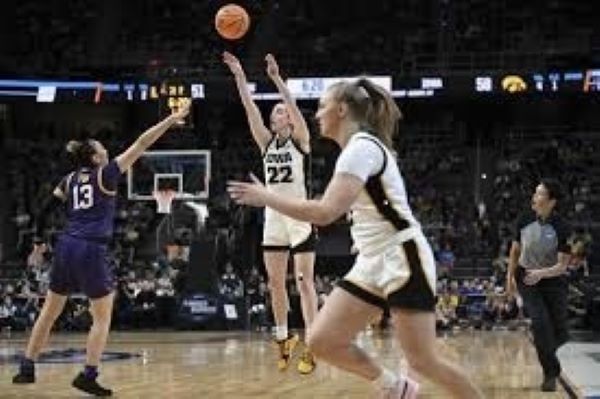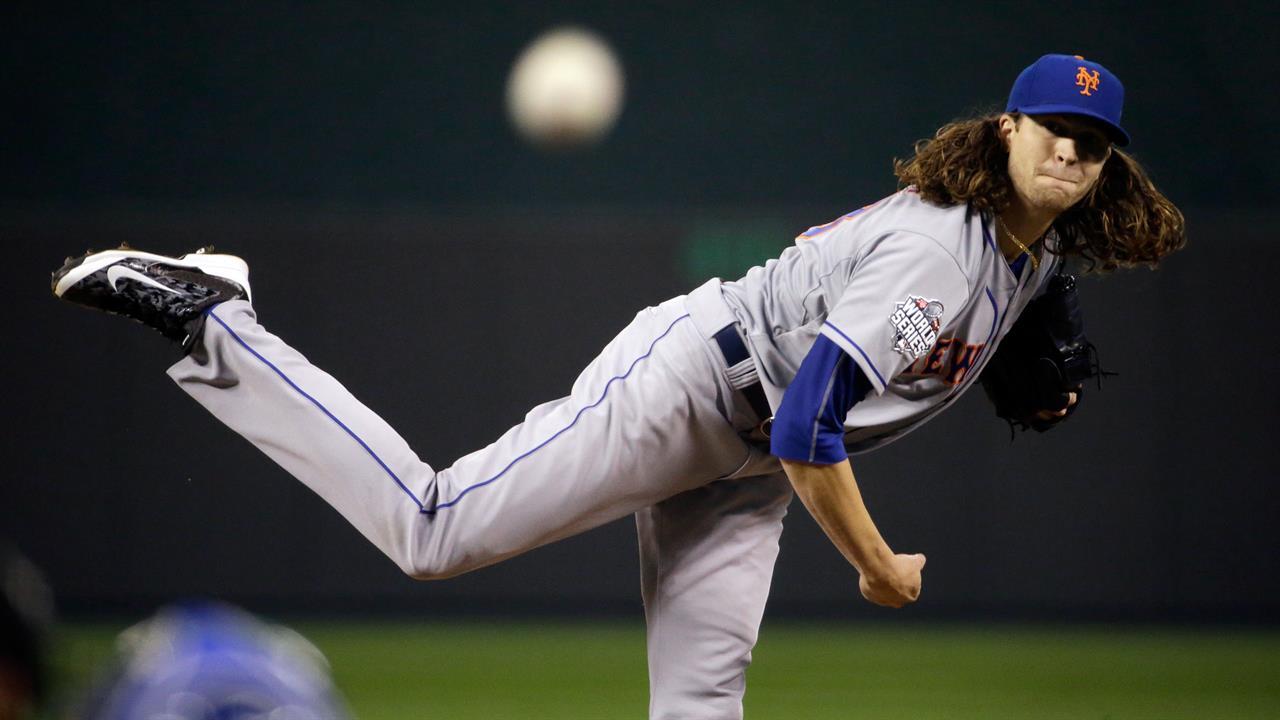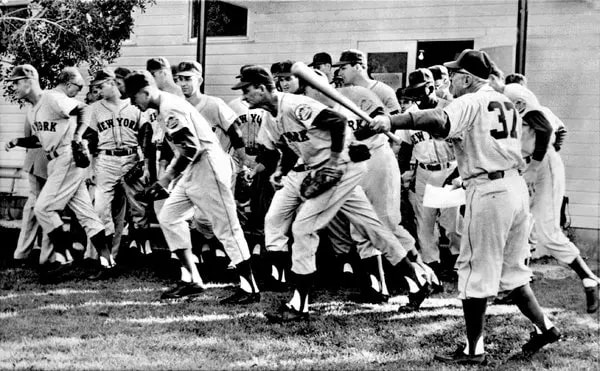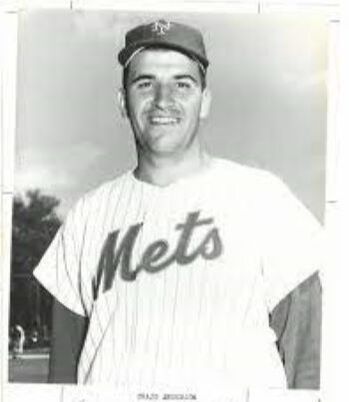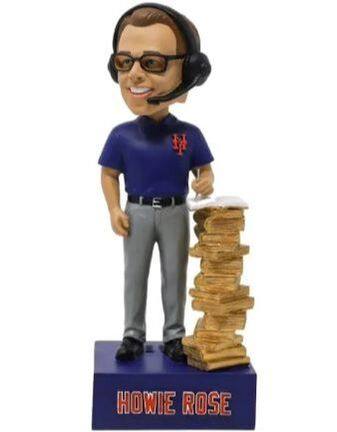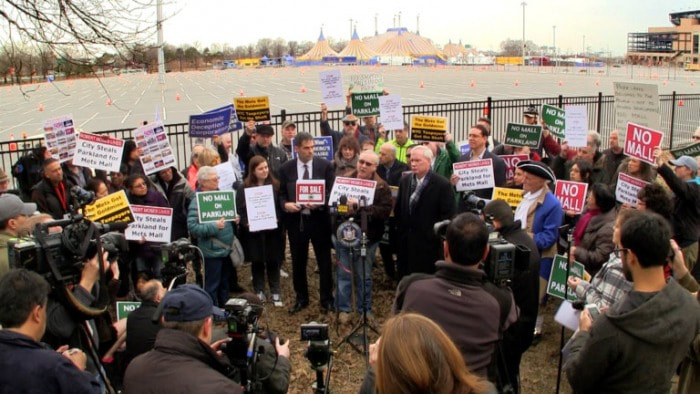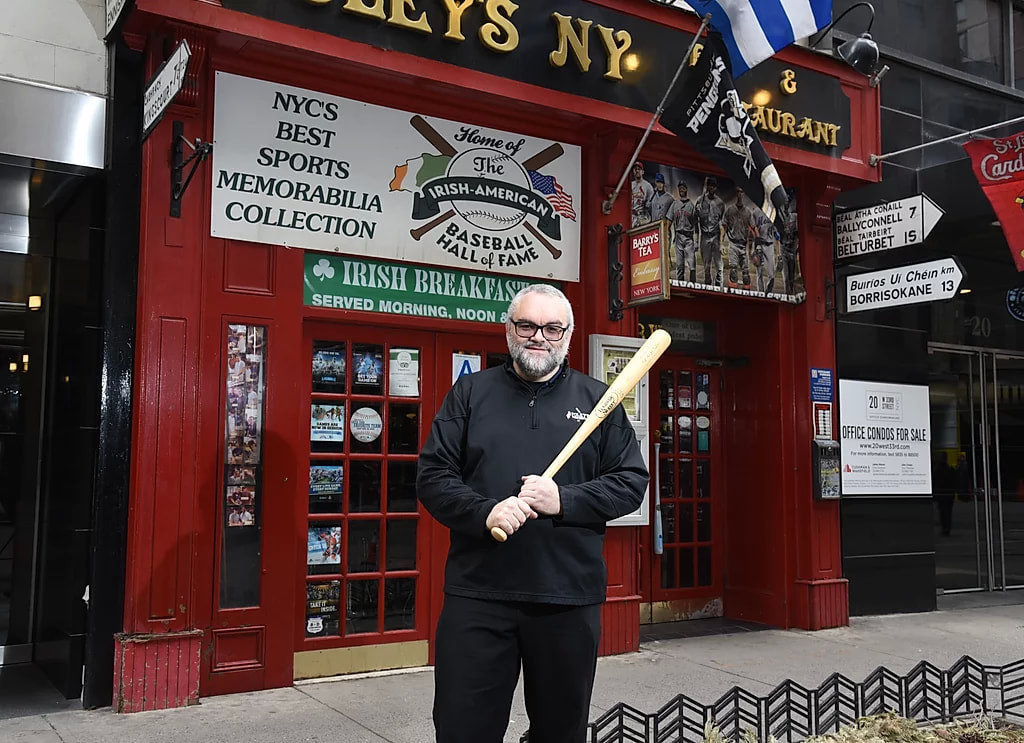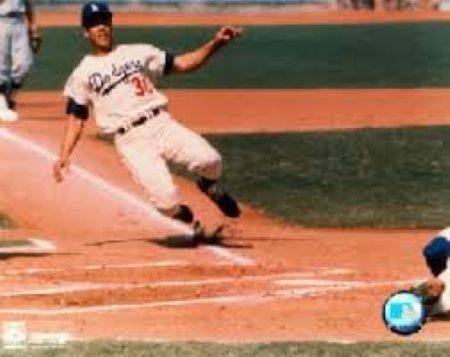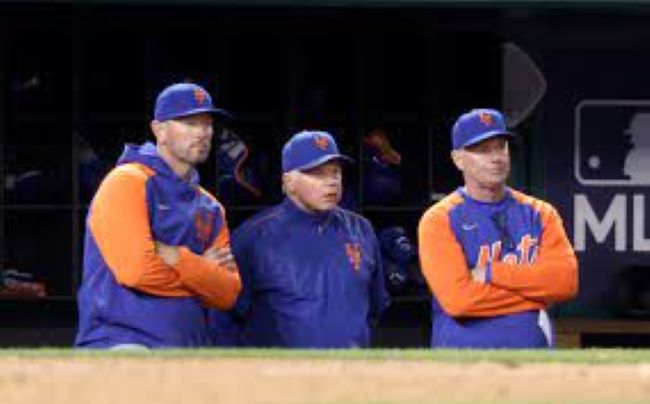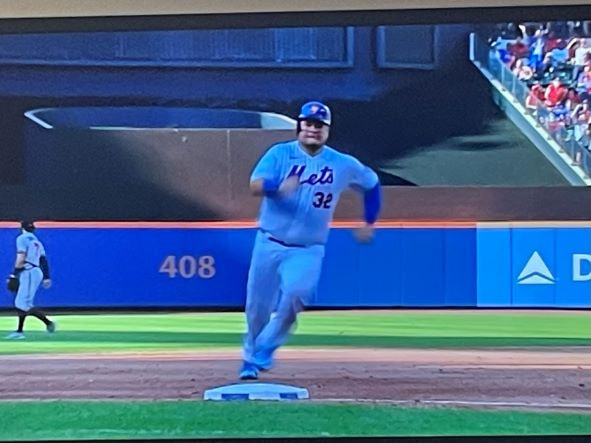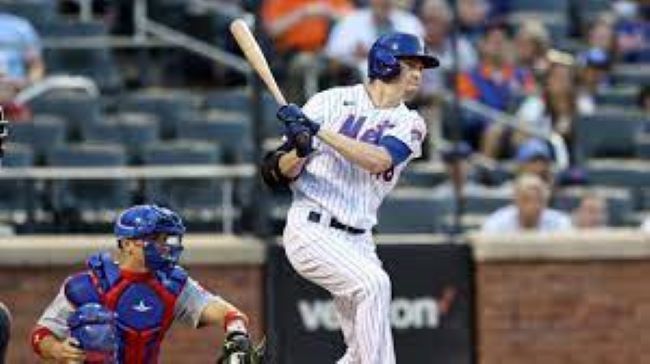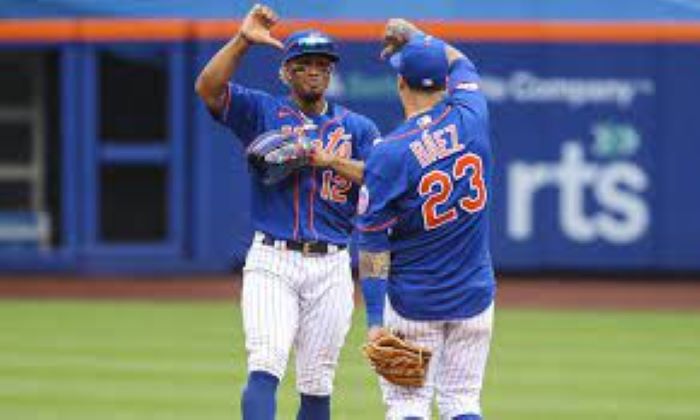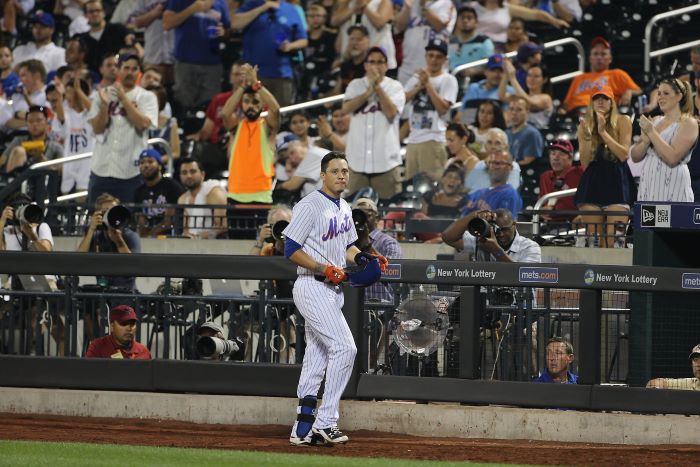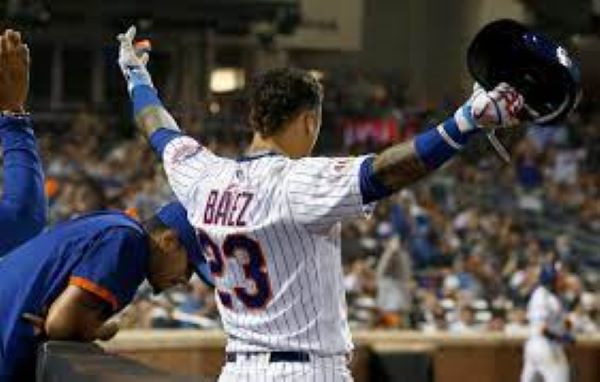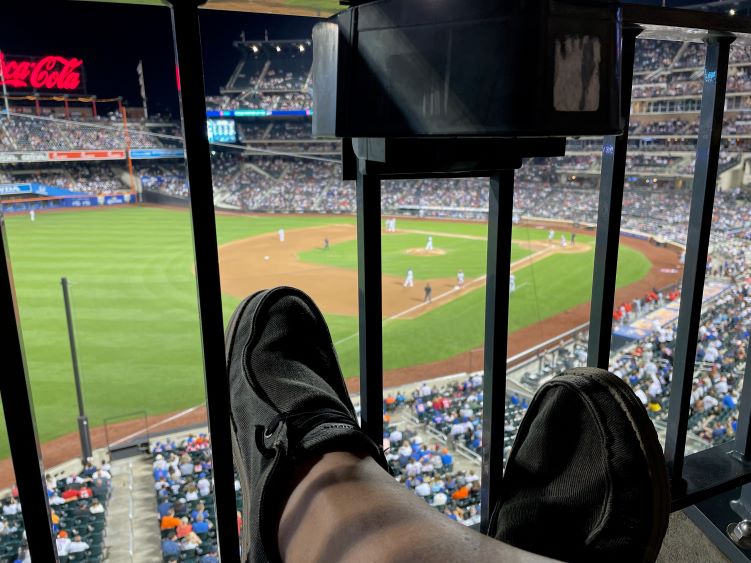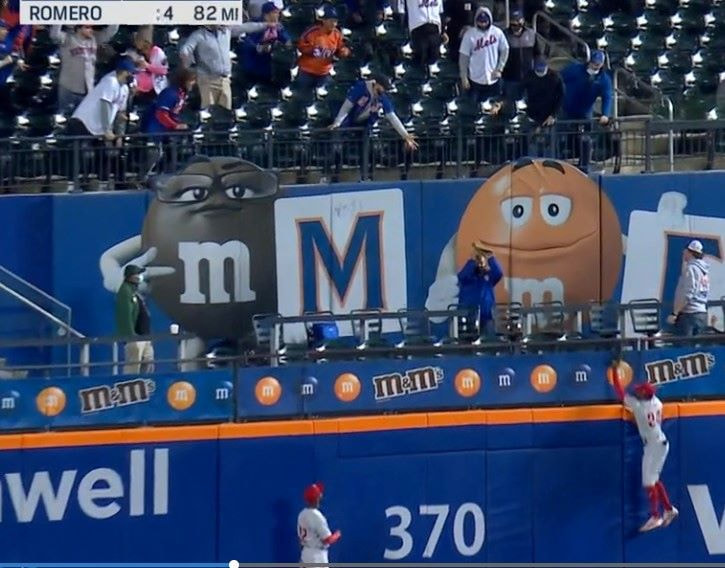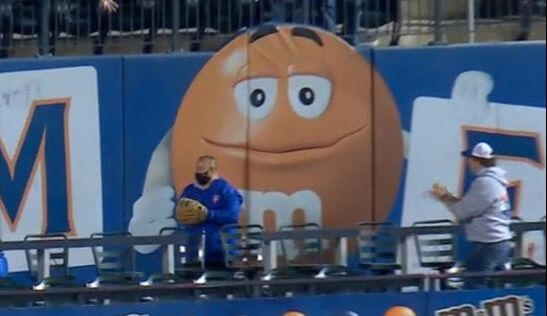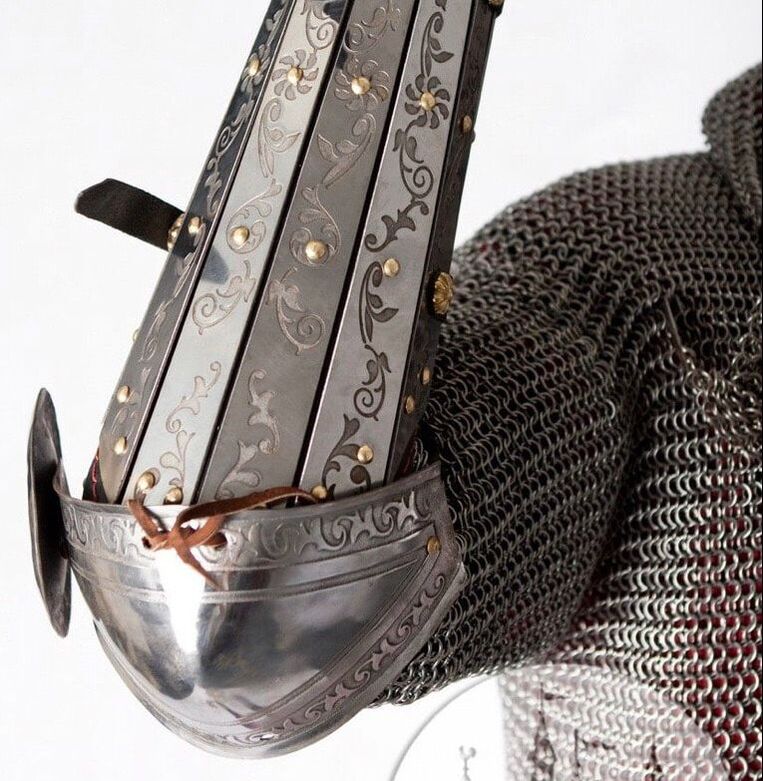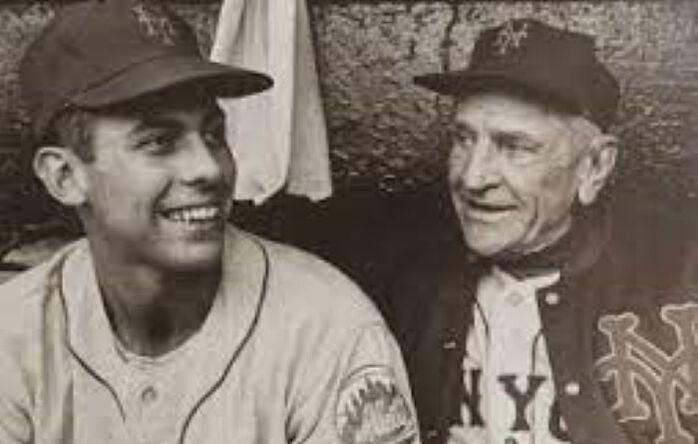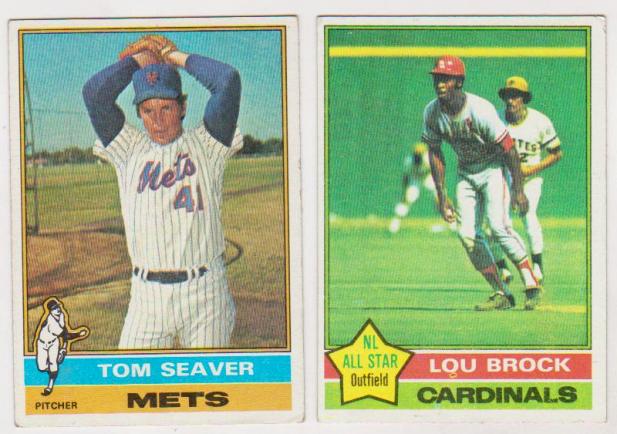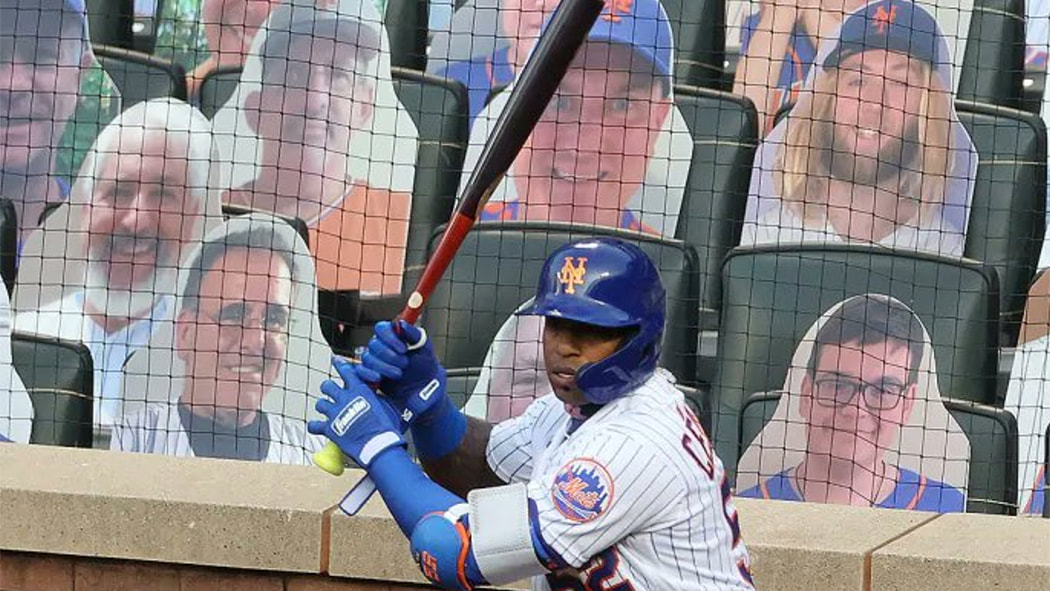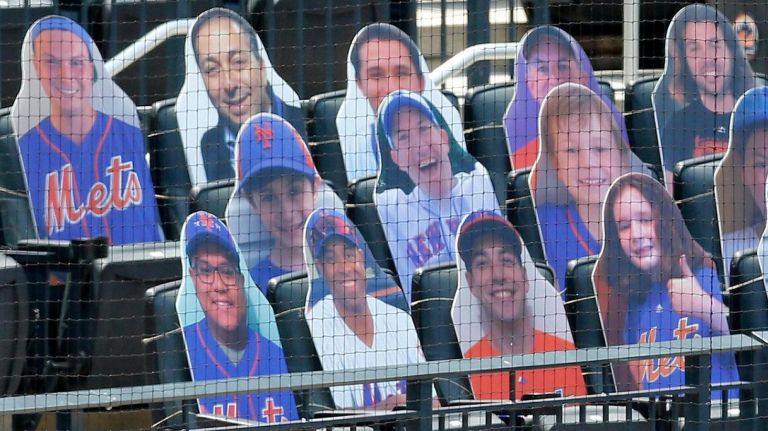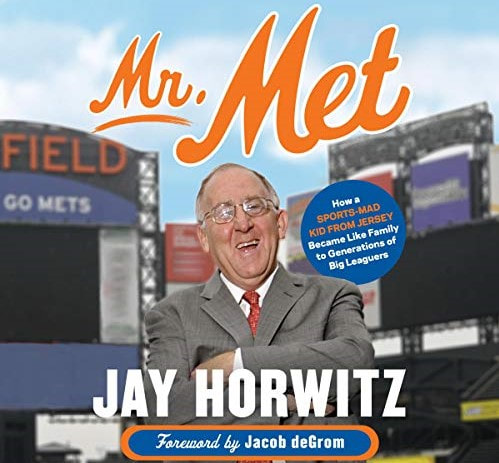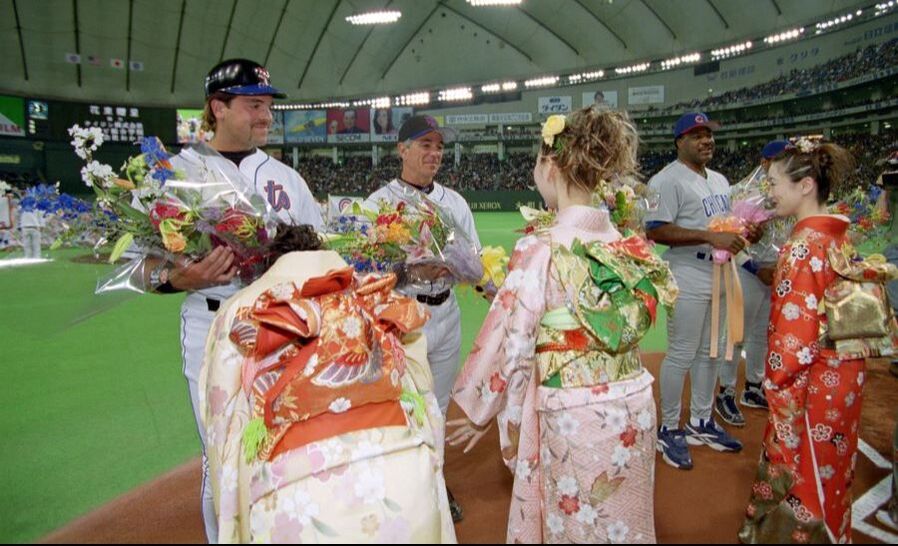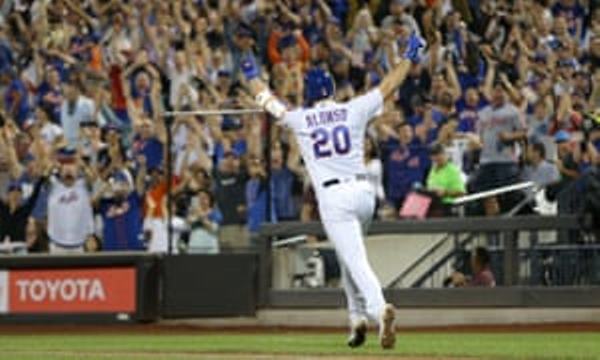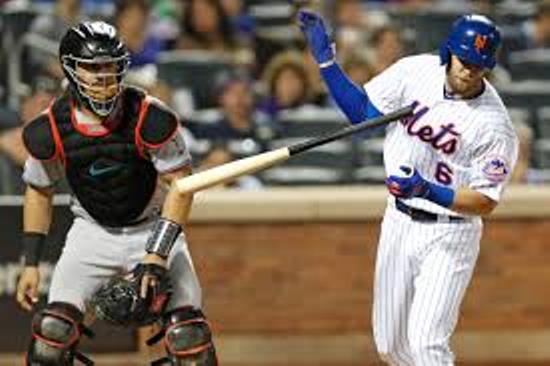|
I’m finishing up a four-day sabbatical from watching baseball – although not necessary from thinking about baseball, talking about baseball, writing about baseball. Fact is, two friends – former ball players, now faithful e-mail correspondents, have added to this missive – and a few family Mets fans pulled me back into the game when I was supposed to be resting my brain. I had made a conscious decision to avoid the All-Star Game on Tuesday, plus that gimmick called the Home Run Derby on Monday. Like many Mets fans, I had my fill of mood swings in the first half of the season – the Mets stunk, too many pitchers I never heard of, too many rumors that Pete Alonso would be scuttled. But then the Mets made a gallant run in the month or so before the All-Star Game, rushing into third place. I watched so much that I could justify ducking the all-star events. Plus, I cannot stand network baseball -- too much witless testosterone from old stars, too much born-yesterday overkill from the network booth. I wanted the terrific Mets commentators – Cohen, Darling, Hernandez, plus Good Old Howie Rose on the radio -- to rest their lungs, their eyes, their wits. And I would do the same. However, on Tuesday evening, I was listening to the dulcet tones and expertise of Terrance McKnight on WQXR-FM, when I heard my cellphone popping. It was a family member griping about the garish uniforms on the all-stars, a comment backed up by two family Mets fans upstate. I flicked on the tv, saw the ridiculous gear --convinced all over again that Commissioner Rob Manfred has no feel for the sport. Bad enough baseball is now in bed with gambling dens. Now it is hustling overkill uniforms. Back to classical music. However, two friends were still buzzing about the all-star uniforms. I heard from Bill Wakefield, who pitched for the Mets in 1964 and has saved up a lifetime of memories. (Pitching to Willie Mays! Running around New York with Hot Rod Kanehl! Studying Casey Stengel up close!) Now a retired businessman in the Bay Area, Wakefield proposed baseball switch to uniforms sported by barnstorming teams with Babe Ruth and Lou Gehrig. Good idea. Wakefield wrote about the first all-star game he remembered from his youth in Kansas City – a rain-shortened game in Philadelphia in 1952, won by diminutive lefty Bobby Shantz. Yes! I also heard it on the radio. Wakefield’s reverie triggered my memory of the first All-Star Game I attended – 1949, my father took me to Ebbets Field, great seats behind home plate. For whatever reason, one of my strongest memories is Andy Pafko of the Chicago Cubs, getting a hit, running the bases in the the Cubs’ traditional home uniform, with red logo. What a concept! I sent my Pafko memories to Wakefield, and also to my friend, Jerry Rosenthal, all-conference shortstop at Hofstra College in 1960, then two years as an infielder in the Milwaukee Braves farm system. Jerry – from Madison High in Brooklyn! – had the immense good fortune to study under farm-system coaches Andy Pafko (who had been traded to Brooklyn in 1951) and Dixie Walker (the Peepul’s Cherce in the mid 1940s.) Jerry, later a schoolteacher in Brooklyn, came through, as I knew he would, with his memories of Pafko and Walker. From Jerry Rosenthal:  I was thrilled by seeing that Andy Pafko baseball card! I will never forget Andy ; one of the finest men I ever met! During the Braves' minor-league spring training camp of 1962, in Waycross, Ga., I got up the courage to asked Andy about "the shot heard round the world"! It was in the "rec" room, after one of our afternoon games. Somehow, I was one of Andy's favorites. That was partly because I was from Brooklyn and we could talk knowledgeably about the old Dodgers and the wonderful Brooklyn culture of the early 1950's! By the way, Dodger fans loved Pafko! Andy told me that he actually cried when when the Dodgers traded him to the Braves! He also said that his time in Brooklyn were his happiest years in baseball!” (Jerry recalled how he asked about Pafko’s moment in 1951, watching Bobby Thomson’s home run sail over his head into the lower deck at the Polo Grounds.)
Jerry wrote: "I finally asked him about Bobby's historic "shot." "I distinctly remember Andy saying: "I played many years with the Cubs, so I knew that that any hard-hit ball in the air that was pulled by a right handed hitter was going out! He added that "he could, at times, tell by "the crack of the bat" when the ball was gone"! He said he “heard it clearly." "Maybe that was because of the sparse crowd at the PG on that momentous day! "That iconic picture of Pafko looking up at the lower- left field deck is branded in the collective memory bank of even the casual baseball fan! "Most fans still think Bobby's homer was hit into the upper deck, maybe that was because it looked like Andy was looking high up! Andy told me that he always got this question: "Did you think you had a chance to catch the ball?" It was impossible to jump anywhere near a wall that was fifteen feet high! "Durocher actually commented on the rarity of homers being hit into the lower left field deck; most homers were hit into the overhang of the upper deck! Bobby hit a sinking line drive off a fastball! it quickly disappeared into the lower deck! "As fate would have it, Bobby Thomson was traded to the Milwaukee Braves and roomed with Pafko for a few years! They became close friends. At first, Bobby wore his number 23, the same number as when he was with the Giants, until he switched to 25 the next year. "I wore that hand-me-down number 25 jersey at Eau Claire. Wish I had that jersey today with "Thomson" embroidered in red thread on the inside. By the way, picture available.) "Here's a fact that most baseball fans never mention: Andy Pafko took over the third base position from Stan Hack in 1945 and played third base in the Cubs - Tigers World Series. "The Associated Press named Pafko to the All Star game as the starting third baseman, even though the game was not played in 45' because of the War. "So Andy was one of the rare major leaguers who made the All Star team playing two positions ( all told- Pafko played in five All Star games - one at third base and four as an outfielder ). "Pafko ended his wonderful ML career by being replaced in right field by Hank Aaron! Not a bad way to go out!" *** (Jerry, who was in several English classes with me at Hofstra, finished with a flourish:) "George, couldn't agree more about those beer-league uniforms worn by All Star players! It irritated me so much I watched part of the Republican Convention! "I took an antacid tablet and went to bed! " *** GV: I have the feeling baseball is going to come in handy in the months to come.
16 Comments
I was trying to watch the hideous Mets -- an act of avoidance from the huckster running for President.
Not to compare, but the Mets were not watchable, either. Fortunately, fortunately, the Upstate members of the family reported they were watching Caitlin Clark light up the NCAA quarterfinals. Since retiring, I've been pretty much avoiding all sports except baseball (which the Mets used to play) and soccer. Other things to do. But on this night of the April Fools, I knew a refuge when it was suggested. I watched just enough of this heady player loft her shots from the 3-point sector - helping to beat LSU and move into the semifinals next weekend. I cannot compare Clark with some of the great female players I have seen, but she is terrific. Maybe Clark is "a unicorn," as a Japanese friend who knows her baseball calls Shohei Otani, slugger and pitcher, currently and maybe for a long time under suspicion for being in some kind of cahoots with his interpreter with a gambling jones. I wonder if anybody in Major League Baseball has linked Ohtani and his associate with the deluge of gambling ads on TV -- snarky losers trying to get even, in Rob Manfred's world. The commercial-makers know their suckers. Anyway, there is a lot to avoid in a year of a grifter waving his new campaign product, a Bible. What a world. Meantime, the Mets stink -- four straight losses to open the season. I have the suspicion that owner Steve Cohen has messed up the decent mind of Pete Alonso, who looks lost, since the owner told him to have another great year and maybe they could do business. Creeps everywhere. Then again, as a family Mets sufferer asked Monday night when I suggested the owner had submarined Alonso, "Maybe. What's Lindor's excuse?" The Mets announcers were giving a gloomy weather forecast for the next night or two. Wishful thinking on everybody's part. Anyway, Caitlin Clark will be tossing up 3-pointers Friday night against Connecticut. She is worth watching. So many bad things going on, sport is the least of it.
But sport teaches you to hope, to endure – an experiment in a test tube. Take Edwin Diaz of the New York Mets. Last March his Puerto Rican national teammates piled on him in a victory scrum in the World Baseball Classic. The weight, the motion, crumpled his right knee. Within minutes, fans and players and doctors alike knew he would not pitch for a long time, or maybe ever. The gloom took over. If you ask me, the loss of Sugar Diaz caused the Mets to go into a shell, made stalwarts like Pete Alonso and Jeff McNeil try to over-hit the ball, put pressure on creaky elder pitchers – effectively ruining an entire season. Mets fans (and Mets writers) tend to think we are experiencing the mood swings of all humanity. We are from New York, representing New York, and we tend to think it is the center of the universe. So the loss of Edwin Diaz and his sizzling sideways slider put the entire planet off kilter (including things that really are important.) The season was empty. Darkness enveloped the land. The world was out of kilter, without the loudspeaker blasting the Edwin Diaz entrance anthem, “Narco,” recorded by an Australian known as Timmy Trumpet. Would we ever hear it again, see it again, cheer it again? Tonight (Monday, March 11, 2024) we heard it again, in an exhibition game in Florida. After a year of rehab and work, Diaz made his return in a spring exhibition game in the Mets’ home ball park in Florida. An electrical failure seemed a bad omen in the first inning, blacking out 10 minutes of tv, but the game returned, and in the fourth inning, the screen showed Diaz slipping into the bullpen, to warm up, as if he had never been away. In the top of the fifth inning, the sound system blasted the music of Timmy Trumpet, the ritual in our souls from the 2022 season. Edwin Diaz jogged to the mound and struck out three straight Miami hitters – all of them major-leaguers, not bushers filling out a road exhibition roster. His slider slashed at an impossible straight line from 90 degrees to 270 degrees, across the plate. Three straight strikeouts. Not even the emotional Mets fans could have hoped for this. Then Diaz skipped off to the home dugout to be embraced by staff and teammates. Back home in Long Island, all the bad stuff in the news – the fighting, the starvation, the threats, the bombast, the stupidity -- was temporarily overshadowed. Between innings, Diaz was interviewed Michelle Margaux, the sideline reporter, and I scribbled down phrases in quite decent English, like, “I feel good…amazing…in front of the crowd…I was making pitches….I want to say thank-you…I spent time with my family, my kids, I had time with my friends, and I was working hard…I missed my teammates…we are a family, really close….” Sugar Diaz said he had missed the trumpet at the ball park – but at home, he added, his two children often played “Narco,” the blare of Timmy Trumpet, which clearly revived the spring in the reconstructed knee of Edwin Diaz. So maybe this is the start of something – light instead of dark, warmth instead of wind, perhaps even, do I dare say it, sanity instead of madness. I am not sure I love the new ownership of the Mets – making Pete Alonso dangle, listening way too much to the analytics dweebs who value lusty longball swings rather than professional hitting strokes. In the Cohen stewardship, I have been brushing up on my Italian, the quote from Dante’s Inferno, that I memorized years ago: “Lasciate ogni speranza, voi ch’entrate.” (Abandon all hope, ye who enter.) In the daily grind of baseball, the buzz lasts only one night. But after watching the sliders of Sugar Diaz, I have hope, and that is something. They pitched for the Mets in different centuries – Jacob deGrom at the start of his career, Roger Craig near the end of his.
They both won over the fans – deGrom for his long-haired exuberance in his early years: Craig for his gnarly perseverance near the end. DeGrom was shut down this week, at 35, facing perhaps two years after Tommy John surgery; Craig died at 93. *** In deGrom’s final years with the Mets, I always felt I was watching his last game. The Mets never hit for him; that flaw was not of his making. He had so many injuries, yet he gritted himself through five, six, seven innings before trudging off the mound, leaving behind a streak of strikeouts but not so many victories (82-57 record in nine truncated seasons with the Mets.) In a time of gigantic bullpen staffs and strangely influential analytic types, deGrom seemed temporary, vulnerable, doomed in a professional sense, despite the pitches that curved and slid and sizzled. It was pure baseball joy to watch him – fielding like the shortstop he once had been in college, swinging the bat like the daily hitter he could have been (and who is to say, maybe still could be?) He was a complete ball player, except for the flaws. Then he was gone, like a main figure in one of baseball’s strange layer of supernaturalism in “The Natural” or “Damn Yankees,” or “Field of Dreams.” Flash. Bang. Gone. Why did Jake go? Without getting into the dollars, it seems to me that the Cohen Mets made a respectful, calculated offer, based on the belief that deGrom’s apparatus would fall apart one day soon. The Mets front office seemed to be waiting for a sucker franchise whose officials did not read the papers or listen to talk radio or consult the available analytics. I have a parallel theory: As the Mets fell apart at home in the post-season last year, fans booed Chris Bassitt as he trudged off the field. “Shame!” I yelled at the TV. Fans in grand old franchises like St. Louis, Cincinnati, Pittsburgh, would not boo, even as a season was going down the drain. At the time, I wondered what Jacob deGrom, from central Florida, felt about that display of venom from Big Town? Was my question answered when deGrom took all that money from Texas and departed without one overt farewell or explanation or thank-you to Mets fans, at least one that crossed my consciousness? Whaever. I hope Jacob deGrom comes back -- in some vestige of that floppy youthful mop of hair and that nasty arsenal of pitches. Life owes him a few breaks. *** Roger Craig had a different kind of career. He turned up with the 1955 Brooklyn Dodgers, tall and slender, ahead of that lefty from Brooklyn, Sandy Koufax. He helped win the World Series – in 1955, “This Is Next Year” -- and then he went west with the Dodgers and helped win the 1959 World Series. In 1962, Craig was part of the expansion team in New York that had to fill the awful Dark Ages void left by the Dodgers and Giants. Craig’s mellow North Carolina accent and kind disposition helped influence a clubhouse after too many losses. In 1963, on a losing streak of 18 games, Craig switched from his No. 38 to No. 13 and was the winner when Jim Hickman hit a grand-slam home run against the looming left-field stands. In those two epic formative years in the Polo Grounds, Craig left his mark on the club – as did Richie Ashburn formerly of the Phillies and Gil Hodges formerly of the Dodgers. Never underestimate experience and leadership. Let me say this about the Dodger presence, commemorated in Roger Kahn’s classic book, “The Boys of Summer,” about the Bums of Ebbets Field. That team had many strong personalities and mature leaders, including Pee Wee Reese from border-state Kentucky, who set a tone in the clubhouse. In the last months of Ebbets Field, Cap’n Pee Wee noticed a young outfielder, Gino Cimoli, showered and dressed and heading for the door, in the still-promising late afternoon. “Gino,” Reese drawled. “If you’re in a hurry to get out of the clubhouse, you’re in a hurry to get out of baseball.” Cimoli sat down, maybe had a beer, maybe chatted with Dodgers around him. The Brooklyn Dodgers were a true team. Roger Craig came along in that milieu, and he passed it along to a motley squad of “Amazing Mets.” He pitched and he often lost and talked baseball and looked the writers in the eye and answered questions. In 1964 Craig was liberated, helping the Cardinals win a World Series. Later, as a coach, he taught a generation of pitchers to throw a split-finger fastball. Later, Craig managed the San Francisco Giants to a championship -- courtly, wise, always remembering familiar faces from those epic 1962-63 season in the rusty old Polo Grounds. When Roger Craig passed, Ross Newhan, long-time baseball writer for the Los Angeles Times, wrote this on Facebook: “Roger Craig, the original Humm Baby, died Sunday at 93, and I couldn't be sadder. There was no manager's office I more enjoyed walking into, no spinner of stories I more enjoyed inscribing. He won two World Series as a pitcher with the Brooklyn Dodgers, moved to L.A, and eventually became manager of the dreaded Giants, who never seemed quite as dreaded with Humm at the Helm. He was quite the guy, and I know my sadness is shared by Corona's Marshall family, Michelle being his granddaughter and Riley his great granddaughter, both frequent visitors to his San Diego Counthome. RIP Roger, you were one of a kind.” I think I can speak for the writers from those years: Ross Newhan got it right about Roger Craig. ### As of this moment, the worst seasonal record in the history of the major leagues still belongs to the 1962 Mets – 40 victories, 120 losses, for a nice round percentage of .250.
However, it looks as if the Oakland A’s – 11-45- .196 as of Tuesday morning -- might break that record. A lot of people who love the Mets are rooting for Oakland to somehow avoid a new low, and leave that honor to Casey Stengel’s 1962 Amazin’ Mets. Is that twisted? Not from my point of view. The 1962 season remains memorable – the first season for an expansion franchise created to replace the Brooklyn Dodgers and the New York Giants, who had bolted to California in 1958. The Mets were often terrible, but they were also a lot of fun, with Stengel diverting attention from all those losses. Now, 61 years later, many Mets’ fans – and also some vintage Mets players -- are saying they could easily live with that distinction. “Keep the record!!!” texted Bill Wakefield, who had a decent year as a reliever in 1964. “I want that to be forever,” says Howie Rose, the Queens kid living out the dream by broadcasting Mets games on the radio. He will be honored by the Mets Wednesday evening and will throw out the first pitch – as fans display their Howie Rose bobblehead dolls. Rose goes back to 1962 when he was 8 years old and his father took him to the Polo Grounds to see the new team. “Being a narcissistic kid, I thought it was all for me,” Rose told me over the phone on Monday. The Mets beat the Cardinals and Gil Hodges hit what turned out to be his last home run. Rod Kanehl – the scrappy minor-leaguer who came to be a folk hero of the early Mets – hit the first grand-slam homer in Met history! Complete game by Roger Craig! Felix Mantilla 4-for-4! My man Joe Christopher playing center field! “It was a year-long celebration,” Rose said, noting that the Mets somehow won a World Series only seven years later. Amazing. “You had to be there,” Rose said. Craig Anderson was there at the start – a Lehigh College graduate, obtained from the Cardinal organization, one of the many “university men” that Casey and Edna Stengel relished. Anderson was the winning pitcher in both ends of a doubleheader against the Milwaukee Braves, raising the Mets’ record to 12-19. Maybe they were not so terrible, some people said. They promptly lost 17 straight, and finished the season at .250. Anderson was up and down with the Mets the next two years, and ended his major-league career with 19 consecutive losses – which was the record going into the 1992 season when another Met, Anthony Young, kept losing. “When Anthony Young approached my 19 straight losses,” Anderson texted Monday, “I wrote him and said I hoped he did not break my record, to no avail. He had good stuff and bad luck. I did the best I could but lost some starts when relievers failed me. So that’s baseball…” Anthony wound up losing 27 straight decisions with the Mets and Cubs, and died in 2017. Craig Anderson, 84, watches the Oakland Athletics stumble, as the A’s ownership allows the franchise to dwindle, to make it easier to get out of town, to Las Vegas. (And why not, given MLB’s dangerous new flirtation with sports gambling?) Some people would welcome another team breaking the Mets’ 1962 record. Keith Hernandez, who helped win World Series for St. Louis and the Mets, said on a TV broadcast last week that the Mets and their fans should be glad to get rid of the streak. But Craig Anderson is not so sure. He took heart from the old-timers’ day in Queens last summer, a lavish reunion including a few original Mets. Anderson added: “Don't forget a truly professional man, Gil Hodges, on and off the field!” “After the recognition that my teammates and I received last August, I truly feel about playing on the first Mets team was a special moment in my career,” Anderson continued, saying his team was “a small part of baseball history and Mets fans made us feel special too. “So let our record stand. Mets fans proved to me that former players, win or lose, are still special” -- Craig Anderson, 1962 Original Met, and Proud of It.” ### It's bad enough that Baseball Commissioner Rob (Roll ‘Em) Manfred has brought about a sleazy era of gambling on the sport that has banned Pete Rose for life.
Baseball is also the former holier-than-thou business that banned Willie Mays and Mickey Mantle for fronting for gambling dens after their retirement. They were reinstated, but then Rose got busted for life for violating gambling rules. Nowadays baseball runs blatantly insulting commercials of young males displaying their insecurities by betting on sports events. Some hitter in a distant ballpark smacks a double off the wall and the young man leaps from his chair, as if he himself hit the damn ball. Encouraging gambling is Rob Manfred’s game, and maybe Steven A. Cohen’s world, on deck. The Mets’ owner is pushing to see if he can get away with building a gambling den a dice throw away the ball park named after a bank. Cohen has been an activist owner since taking over the Mets – getting rid of a lot of deadwood in the organization and spending millions upon millions for better players plus activists like Billy Eppler and Buck Showalter. Those are the current conditions, and Cohen spends and spends. (He also showed great showman instincts by staging two of the best feelgood events I’ve ever seen in a ballpark – the retirement of the No. 17 of Keith Hernandez, and reviving the Old Timers’ Game and festivities, including a dying John Stearns, and survivors of Mets’ stalwarts Tommie Agee, Alvin Jackson and Bill Robinson. Events like these do not just happen. They take money, and staff, and good instincts on the part of the still-new owner. One suspects Cohen will even go ahead and sign Carlos Correa, unless Correa truly has a lead leg. Cohen is no fool. He avoided getting stung by over-paying for the five-innings-a-week pitcher, Jacob deGrom, despite the grand memories of when deGrom was healthy. (As for deGrom’s cold-blooded “I’m rich! I’m rich!” smile when he bolted from the Mets with nary a kind word about the good times in Flushing: As we say in Queens, Yeccch!) Cohen understands the process of making more and more money. He has noticed the bleak concrete emptiness of parking lots -- “50 acres of asphalt" -- to the west of New Shea Stadium, and he has envisioned late-model cars bringing lucky tigers escorting handsome women, with money to burn. Or at least, that is the image. Fortunately, the governments of New York city and state still have a chance to veto a gambling den on very public land. (Wait, don’t Mets fans park their cars there 81 home games a year? Isn’t traffic bad enough in that tangled sector?) According to the Wall Street Journal, Cohen held an open house for interested Queens types the other day. No fool, Steven A. Cohen. He played down the lust for a gambling den by saying he just wanted to hear the opinion of the Queens folks – known for their cagey urban instincts (sussing out the criminality and bullying of former Queens resident Donald Trump.) At the open house, my Queens homeys seemed to voice a skeptical attitude toward the gambling den. According to the WSJ, the folks who showed up – for a ballpark frank! – voiced preference for live music, dining, art exhibits and festivals rather than gambling. The WSJ reported that Laura Shepard, a community organizer for the transit advocacy group Transportation Alternatives, told Cohen that the development should be a destination that people can walk, bike or take transit to — not just drive. “Personally, I don’t want to see the casino,” she said. “Most people want more green space, concerts and community events.” There is a lot of communal pride in Flushing-Corona-Jackson Heights-Forest Hills swath of Queens, home to a hundred languages and food tastes. This is the same region that fought back an attempt to build a soccer stadium on the crowded public fields of Flushing Meadows park a couple of decades ago. A big-time soccer stadium will soon be built where the chop shops once hunkered. Isn’t that enough upgrade for anybody? The locals should tell Cohen and Manfred: Go gamble somewhere else. Go to Atlantic City, that once bled the great businessman Donald J. Trump. Go to hilly Connecticut where white marauders once slaughtered Indigenous people near the site of today’s Foxwoods -- tainted grounds, now packed with roulette wheels and poker tables and sporty folks. Here’s one idea for Stephen Cohen’s “50 acres of asphalt:” Mara Gay of the New York Times recently wrote: “More and more, living in New York is out of reach not just for working-class or middle-class residents but nearly anyone without a trust fund.” I bet Steven Cohen could make a few bucks from something actually needed, like moderate-cost housing. Then, there is this. One of the great New York City treasures of recent decades – an Irish/baseball pub, if you can imagine, named for a gremlin sportswriter, Red Foley – had a trove of baseball souvenirs covering every inch of wall and ceiling across the street from the Empire State Building. But the pandemic forced the proprietor, Shaun Clancy, to close down (paying his workers for at least a month, out of heart.) Shaun is now cooking at a refuge for the homeless on the Gulf Coast of Florida; he chats up the weary while doling out something filling and maybe even healthy. I bet you – pardon the expression – that if Steven A. Cohen erected a Foley’s II on the ”50 acres of asphalt,” Shaun would dust his vast souvenirs from its storage place, and oversee a renaissance of Foley’s II. And patrons could teeter discreetly to the 7 Line or the LIRR station, staying off the highways. Win-win. Steven A. Cohen, meet Shaun Clancy. (Sept. 6: When the glorious season went downhill) What can you say about a baseball team that died? That it was talented and spirited. That it played with vestiges of old-timey baseball. That it had Edwin Diaz jogging in from the bullpen, accompanied by Timmy Trumpet. That it ran out of gas in the final month.* From spring training to Labor Day, the Mets found ways to win, sometimes with power, sometimes with guile and bunts, sometimes despite two iconic pitchers showing signs of mortality. Mets fans reassured each other that this was one of those rare seasons in the team’s torturous history. Buck Showalter, glowering in the dugout, had all the information in his meticulous, finicky mind, in his little black notepad. In the second half of the season, the Atlanta Braves asserted themselves (“They are the World Champions,” Good Old Howie Rose said on the radio recently.) There are theories about why the Mets fell apart. The pitchers caught up with Pete Alonso and Francisco Lindor. Not enough power from the two catchers. The late-season acquisitions were exposed. (Tired of watching Daniel Vogelbach take third strikes?) DeGrom and Scherzer could not pitch late into games. The “organization” showed mixed messages in bringing up three callow prospects late in the season, without time to adjust to the majors. But I’ll tell you the worst thing to happen to the Mets in 2022:, when a record-setting 122 Mets hitters were hit by pitches. The worst was when Starling Marte was whacked on his right hand on Sept. 6. Marte was the soul of the Mets, a refugee from the lower depths of the majors, with an athletic strut, a knowing smile, the ability to steal a base, hit a homer, bounce against the wall to make a catch. I always liked him with the Pirates. With the swagger of Smokin’ Joe Frazier, the late heavyweight champion, Marte was always on the move, connecting with fans, perpetual motion. But Marte did not play until the wild-card series, a full month later -- stealing a base or bouncing into the outfield wall, with a splint on his aching right middle finger. By the time Marte got back, the Mets’ fire was gone. The final month was sour, particularly in the three wild-card games. ---When Max Scherzer was bombarded for four homers in the opening game, a lot of Mets fans -- so colorful, so verbal, so passionate -- took the low road with yowls and boos for Scherzer. Shame on them. I bet St. Louis fans didn’t boo anybody as the Cardinals went down and out, at home. --- In the Mets' third and final game with the Padres, while Joe Musgrove was mowing down the Mets, Showalter asked the umpires to check him for a foreign substance on face or uniform. The umpires poked at Musgrove’s ears, which only made Musgrove even more resolute, as he pitched seven innings, giving up one hit. I’ve known Showalter since his first days as Yankee manager, and I get a kick out of him and his old-school game tactics. But Showalter’s ploy against Musgrove looked cheesy. So the Mets’ season is over. No point in looking ahead. The three lead pitchers were wobbly in crucial series. Some contracts are up. The “prospects” never did get enough experience to show what they might do next year. But Mets fans have their memories – Nimmo’s catch, Escobar’s torrid September, McNeil’s batting title, gallant slides home, swarms on game-ending hits, and most of all, the trumpets for Edwin Diaz, now echoing in the Mets' empty ball park. With all due respect to the other baseball team in New York, and the classy slugger, Aaron Judge, for this worn-down Mets fan, it is now time for the old Brooklyn saying: "Wait til next year." --- * With homage to Erich Segal, author of "Love Story" This is why I love baseball: No matter how hard the new analytics types try to invent a new sport, the ashes of the old game, the real game, spark into flames again. On the day before Maury Wills passed, a current major-league player performed some derring-do worthy of the old master. Terrance Jamar Gore is not dashing into the Hall of Fame or even a steady spot on a major-league roster. But when a contending team needs what sports broadcasters like to call “foot speed,” plus “smarts,” Gore is often hailed from the minor leagues to bedevil pitchers, catchers and whoever is supposed to be covering the next base. Maury Wills did the bedeviling on a daily basis for 14 major-league seasons, winning three World Series for the Los Angeles Dodgers. His life – the ups, the downs – was described by Rich Goldstein in the NYT on Tuesday. Before I get to Terrance Gore, Wills’ spiritual descendant, I will share two visions of Wills: ---At the peak of his career as brilliant leadoff man for the light-hitting but championship Dodgers, Wills threw his smallish body at the next base and its surrounding dirt paths – enough to incur red abrasions, known in the trade as “strawberries,” on his hips. The off-season was not long enough to heal them, so by the following March Wills would be grinding his skin all over again. (Some old-timers wore sliding pads inside their uniforms but Wills and other players preferred uniforms tailored for their slight builds, hence perpetual strawberries.) ---Wills did not merely steal bases. He borrowed baseball wisdom from ancients like Casey Stengel, when the Old Man managed the new team in New York in 1962. I cannot pin down when and where this happened, but I heard about it since 1962: Casey was giving a pre-game sermon to some Mets about the value of the “butcher boy” – slashing the ball downward, better than a bunt. The Mets seemed bored by the lecture but Casey noted one astute pair of eyes belonging to Maurice Morning Wills, the Dodgers’ shortstop, at the edge of the circle. The Old Professor was happy to have one student. So that was Maury Wills. Baseball has since evolved into a perpetual home-run derby, with would-be sluggers armed by details like “launch angles” and “exit speed.” Speaking of home runs, both New York teams had long-ball frolics Tuesday evening—Aaron Judge hitting No. 60 and Giancarlo Stanton hitting a walk-off grand-slam homer for, yes, you got it, the Bronx Bombers, and the Mets coming back from a 4-0 deficit on a 3-run blast by Pete Alonso and a grand-slam by Francisco Lindor. Quite a night for “exit speed.” Before that, the Mets won a game last Sunday on the legs and wits of Terrance Gore, all 5 feet, 7 inches and 160 pounds of him. Gore is 31 and with a ball cap on his head he looks half that age. He has a .217 major-league batting average, higher than that of some lugs lunging at every pitch. He is a stolen-base specialist, used in vital circumstances in big games, and already has three World Series rings and would not mind running and sliding the Mets into this year’s Series. The Mets picked him up from the minors in August, and he got into the tie game when Tomas Nido led off the eighth inning with a single. Everybody knew why Gore was out there. The pitcher threw several times to first base to keep him close, but Gore confidently edged back onto the dirt basepath, busting for second as soon as the pitcher threw home. The catcher’s throw flew into center field and Gore scrambled up and darted to third, and he scored the tie-breaking run on a single by Brandon Nimmo. Home runs are fine. But even with the gigantic pitching staffs of today, the game should have room for a running specialist. And if you are not yet charmed by the concept of the running specialist, ladies and gentlemen, the professional pride and knowledge of Mr. Terrance Jamar Gore: Not all the old-timers wore uniforms at the grand celebration of antiquity. The old players, legends all, visited Queens on Saturday as the tradition of Old-Timers’ Day was honored after a gaping absence of 28 years. How wonderful it was to sit in my home cave and watch Frank Thomas, Jay Hook, Ken McKenzie and Craig Anderson from the first team in1962. They were good people then, helping Casey Stengel create the lovable myth of the Amazin’ Mets. Now, in the very young and very promising era of the new owner, Steven Cohen, the Mets brought back 60 old-timers to stand in for the Richie Ashburns and Alvin Jacksons who toiled so honorably in 1962. Wonderful touch: room on the field for family members representing Gil Hodges, Tommie Agee, Willie Mays and my departed friend, 1986 coach, Bill Robinson. 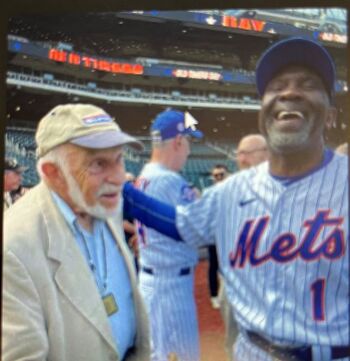 Steve Jacobson and Mookie Wilson Steve Jacobson and Mookie Wilson Mingling with the old-timers was my friend Steve Jacobson who helped cover the first season for Newsday and starred as columnist for decades. Steve, going on 89, was welcomed by Jay Horwitz, the haimish maestro of Mets alumni affairs, who also invited me as a surviving veteran of 1962. But I’m still ducking public gatherings during the pandemic, so I stayed home and waited for Steve to call me with the gossip. Steve said he wished he could have chatted with all of them, but there was such a crush, everywhere. He could have talked to Frank Thomas about hitting 34 homers and driving in 94 runs, and Ken McKenzie, who had the only winning record (5-4), and Craig Anderson, who won both ends of a May doubleheader over the Milwaukee Braves to raise the Mets’ record to 12-19 and cause manager Bobby Bragan to call the Polo Grounds a “chamber of horrors.” Oh, yeah. The Mets promptly lost 17 straight, en route to a 40-120 record. Steve also could have talked to Jay Hook, with his engineering degree, who won a game one day and told the writers it was like eating sour cherries but then tasting a sweet cherry. (All three 1962 pitchers present Saturday were part of Casey’s respected “University Men” – McKenzie from Yale, Anderson from Lehigh and Hook from Northwestern.) 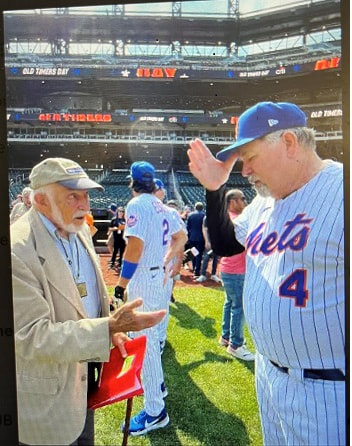 Steve Jacobson and Ron Swoboda Steve Jacobson and Ron Swoboda Steve did have time to mingle on the field, wearing a Newsday ball cap, with his wife, Anita, snapping photos of him with epic Mets including Ron Swoboda and Mookie Wilson (who later would gambol in the outfield in the old-timers’ game, along with another sleek alum, Endy Chavez.) The part that Steve treasured most was having a few old Mets tell him he had been one of those sportswriters who did not throw them under the bus when they had a bad hour on the field. We were reporters, we were critics, but we were not rippers. Now the Mets are in a new era. Steven Cohen, a grown-up Mets fan, used his money to hire Billy Eppler, Buck Showalter, Francisco Lindor and Max Scherzer. Who knows if the Mets will hold off the Braves and go far in the post-season? But gestures like the recent Keith Hernandez number-retirement and Willie Mays number retirement (honoring the jolly first owner, Joan Whitney Payson, indicate a generosity of pocketbook and heart. (Speaking of not throwing people under the bus: a few old players and writers and fans have blasted the previous ownership of Fred Wilpon and Saul Katz for not putting enough money into the franchise. I have a friend who ran a center called Abilities, Inc., on Long Island, which helps people function better in work and social life. I am told that the Wilpon-Katz family was generous with money and energy.)
Let's just say: the Mets are in a new era. I was happy to hear my friend Steve Jacobson bubble about his hours back at the ball park with similarly elderly Mets who once upon a time gave the fans so many memories -- some of them even good. We all need a momentary diversion from the 10 or 12 top terrors loose in the world.
The Mets do it for me -- playing a brand of ball I thought had gone out of style. As of Monday morning, they were tied with the Yankees for the best record in baseball. Nothing like big-market money. I think of all the years when I worked at appearing professionally neutral. Now that I am retired, I am free to watch the Mets – with two separate Met-centric smartphone message dialogues going at the same time. The Mets are so much fun to watch because they are defying the launch-angle, exit-velocity analytics trend that has rendered contemporary baseball so stultifying. It can be done. The Mets of recent years had the same bad habits of other teams – trying to put the ball over the fence and get their moon shots on TV and social media. Managers came and went – good grief, one general manager was a reforming player agent -- but New York money-guy Steve Cohen bought the team and brought in Billy Eppler as general manager and hired Buck Showalter as manager and now the Mets hitters are humbling teams with their lopsided shifts, hitting it where they ain’t, in the immortal phrase of Wee Willie Keeler. Jeff McNeil once was lost but now he’s found – propelling a home run now and then, when it comes naturally, with his good swing. Showalter is doing one of the most noticeably great managing jobs I have seen in a long time. I’m happy for him. Met him the winter before he took over the Yankees, a boy manager who had impressed Billy Martin with his knowledge as a fringe coach during spring training. Now he was getting his chance. I flew into Pensacola one morning in mid-February of 1992 and he drove me to his old neighborhood, more Alabama than Florida, introduced me to his pals at the gas station, in a town where his late father, a former Little All-American fullback and a high school principal-coach, was a legend, and then we stopped off to meet his mom. Ever after, when I was around his team, Buck he would point to me and say, “There’s George, he’s been to my hometown, he understands.” I wasn’t always sure what I understood, but, sure, Buck, sure. These days, he is a master at work in his dugout, intense, obsessive, usually with bench coach Glenn Sherlock at his side, as a sounding board. Have you ever seen coaches more alert, more pro-active, than Wayne Kirby (social director at first base), Joey Cora (performing acrobatics at third base), Eric Chavez (hitting coach, smiling reassuringly in the dugout) and Jeremy Hefner, (pitching coach, foxlike, alert to every nuance of his charges?) During the game, Showalter conducts little seminars with lifers like Max Scherzer and Francisco Lindor, while popping sunflower seeds into his mouth and making snarky comments to the umpires. Old school. Buck neglects nobody. He gets players into the lineup, before they get too rusty. He benched Mark Canha for a few days after the Mets spent more of Steve Cohen’s money for Tyler Naquin, and on Sunday Buck put Canha back in the lineup, and of course the pro responded. And for those hard-core fans, who spend their hot summer days and nights peering at the tube, it’s been a pleasure to watch the pitchers holding the Mets together when Scherzer was hurt, when Jacob deGrom was recuperating. The past week, those two aces have been back, as good as ever. Buck tried to nurse deGrom through the sixth inning on Sunday until Dansby Swanson broke up the no-hitter with a two-run homer and Buck nodded and gave deGrom the rest of the day off. It is a memorable season for Edwin Diaz, reviled in his first season in town, now having the best relief season ever seen – entering to the stirring trumpet music. On Friday Showalter recognized this was August, and they were playing the Braves, so he asked Diaz to pitch two innings and received six outs of Koufaxian brilliance. Luis Guillorme – once known primarily for having caught a wayward bat (the baseball kind) in the dugout – has been so good that Buck uses him in most days. day. Along with the Diaz entrance, the best show on the Mets is Guillorme and Lindor playing Marquis Haynes and Goose Tatum (ask your grandfather) with the ball as they trot off the field at the end of an inning. And I haven’t even mentioned Pete Alonso…or Starling Marte….or Brandon Nimmo…the other pitchers. (I am also taken with Carlos Carrasco, and his El Greco-painting serenity.) Entire odes could be written about the Mets -- and sometimes are, on our smartphone links-- during this compelling season that gives us a rest from all the other stuff. The terrible stuff is all over the news but baseball, as always, is a welcome diversion. It was on television and good old the radio this weekend. Pick your team; mine is the Mets. I make no apologies for the hours I spent following Good Old Howie Rose on the radio for two days and the Three Amigos on the tube on Sunday. The Mets presented their first exhibition Saturday, with Rose back in the booth after shutting down last season because of illness. He sounded himself in his haimish Queens tones (so familiar to my central Queens ear.) Rose and his radio sidekick, Wayne Randazzo, noted that spring training was delayed to mid-March as the hard heads of Major League Baseball nearly throttled their thing, but now MLB is going after all that good, clean gambling money, while clubs are playing catchup – opening days in less than three weeks. As the Mets played the Washington Nationals in West Palm Beach, Rose and Randazzo discussed the big change in rules this year – the National League has gone the way of the designated hitter after 49 years of the gimmick solely in the American League. (The New York Times has an interview with Ron Blomberg, the first DH for the Yankees back in 1973. Blomberg likes it, and why not? It is his claim to fame.) Somewhat to my surprise, Rose, 69, said it was time for “traditionalists” to accept the DH. Most pitchers can’t hit, anyway, and even those who can are in danger of being injured by putting their hands and wrists and elbows in the way of a wayward pitch. The deGrom Argument. Jacob deGrom has been my best reason for keeping the tradition, based on the good hitting pitchers over the decades – Don Newcombe of my Brooklyn Dodgers, Bob Gibson, Don Drysdale, Tom Glavine, Madison Bumgarner. (Shohei Otani, the slugging pitcher, is not just from Japan; he is from some other planet entirely.) However, deGrom is also the best argument for getting elite pitchers out of harm’s way. He was an infielder in college and is a lithe fielder on the mound, and he can also bunt and swing for power. He kept getting hurt last year, ending his season way too early, possibly because of the stresses of hitting a fastball with a wooden bat. Who wants to see Jacob deGrom’s career end early? Howie Rose was spot-on, in the opening innings of the first radio exhibition of the spring. This traditionalist gives up. I picked up the Mets’ Sunday game on television, from their camp in Port St. Lucie – Gary Cohen, Keith Hernandez and Ron Darling, warming up for their 17th season together – so savvy, so entertaining. Their show showed a clip of Lindsey Nelson doing an intro for the Mets’ historic first camp in 1962, and praised the earlier Three Amigos, Nelson and Bob Murphy and Ralph Kiner. The current Amigos let us know winter was truly over by discussing the free agents who have moved around for salaries that seem unbelievable to me. They also discussed the legacy-killing act of Robinson Cano, who is back from a second drug suspension, the knucklehead. The Amigos also talked about how clubs have to prepare fast. Hernandez, that great first baseman, noted that Francisco Lindor has a bad habit of underarming his throws on slowly-hit grounders. They speculated whether Michael Conforto could still be signed for this season --- a really good point, since he seemed a victim of the Mets' organizational anarchy last year. And Cohen, who flew to San Diego to fulfill his winter gig with Seton Hall basketball, raved about the stunning double victory by fellow jersey school, St. Peter’s. 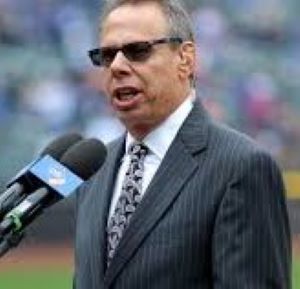 Welcome Back, Howie Rose Welcome Back, Howie Rose True confession: just like the ball players, I am not ready to go nine, so I dozed in mid-game and caught the last segment on the radio with Good Old Howie Rose. He was talking about the deterioration of most of the Mets’ hitters last year, as the old-time batting coach, Chili Davis, got fired, replaced by two minor-league coaches, who, according to Rose, were undercut by analytics types going where they don't belong – buzzing in the ears of major-league hitters. That won’t happen again, Rose said, and I hope he’s right. In the final innings, Rose noted that the new manager, Buck Showalter, re-arranged the batting order of the anonymous late-inning subs, and imitated Bob Murphy, who used to explain the machinations of Casey Stengel or Bobby Valentine by enunciating, “I’m….sure…he…has…his... reasons.” “Come on, April 7,” Rose urged, referring to Opening Day, when the March of the Subs will no longer happen. He observed the fans, making their getaways into the choke point on the dreaded Peacock Blvd. Randazzo said he knows a short cut, albeit illegal, through a nearby gas station – the late-inning preoccupations of spring training. All seems normal. Welcome back, baseball. ---- * -- Homage to the Terry Cashman standard. And for all radio baseball fans: (In a world of Kabul, Covid and Ida, the following is totally irrelevant. But this is what I know.)
* * * (The Thumbs Guys "apologized" and the Mets won a doubleheader on Tuesday, the first with a stunning rally. But the basics remain. My friend, once a prospect with the old Milwaukee Braves' franchise, keeps up with the business, and gives his view of the Mets' problems:) From Jerry Rosenthal: George, your fine piece should resonate with angry Mets’ fans! This latest debacle was inevitable! The toxic duo of Lindor and Baez split the Mets’ clubhouse that was once led effectively by Jacob deGrom! Steve Cohen made a huge mistake in signing Lindor for over $300 million! However, picking up Baez, a known malingerer and “all about me”ball player is Sandy Alderson’s mistake! The imperious Mets’ executive never seems to get criticized by the press for the poor construction of this Mets roster and senseless trades. The Mets gave up a top outfield prospect to get Baez just for a “short-term rental.” Alderson went for a home run hitter like Baez, ignoring the fact that he could easily strike out four or five times in a game! Obtaining Baez brings to light the fallacy of the “money ball” philosophy! All season, the Mets were waiting for that home run that never came at the right time! It was all about the long ball! Putting the ball in play with two strikes was not in the Mets’ playbook in 2021. Alderson fired respected batting coach, Chili Davis who was an advocate of using the wide expanse of Citi Field to the hitter’s advantage! Chili emphasized the importance of trying to hit the ball in the alleys and using the fundamentally sound hitting approach of “hitting through” the ball and making solid contact, rather than trying to “lift” the ball in the air! Chili’s smart hitting advice was abandoned under the new “hitting gurus” Alderson brought in to replace him! ! They are more intent on tweaking the launch angles of Mets hitters. The subpar offensive performances of Conforto Lindor, McNeil , McCann, Davis and Smith proves this experiment has been a colossal failure! The Mets offensive numbers are among the lowest in the major leagues! Alderson has yet to step up and take responsibility for these disastrous decisions! The Mets must make many moves in the off season, but it will not do any good if the same decision makers stay in place. It remains to be seen if Steve Cohen recognizes that his organization is dysfunctional from the top to bottom! Steve Cohen should be looking at the Atlanta Braves as a model of how a major league franchise should be run! We never hear of turmoil or scandal in the Braves’ organization. If an executive or player is not in-sync with the “team first” philosophy of the Braves’ organization, they are gone! Continuity has always been important to the Braves. The long tenure of managers Bobby Cox and Brian Snitker shows that stability is highly valued by the organization. It’s the same with many of the Braves’ coaches and front office personnel. Baseball fans recognize that the Braves fine young players- Jose’ Acuna, Ozzie Albies and Austin Riley were all developed in the Braves minor league system, along with their great veteran team leader-Freddie Freeman. They were steeped in the Braves’ tradition of doing the right thing on the field and off the field! That’s the way it was when I played in the Braves’ organization in the earlier 60’s, when John McHale was the Braves’ GM. That’s the way it is today with Alex Anthopoulos as the Braves’ GM. * * * (George Vecsey's earlier critique, before the "apology." Well, Javier Baez made it easy for the Mets to let him go in a month. The Mets’ rent-a-dud and his pal Francisco Lindor – the team leader by self-proclamation – showed their contempt for the Mets fans in recent days, flashing thumbs downward, like a couple of imperial Caesars. This is not a good career move for two stars from other teams in other towns, who arrived separately this season and, a lot of the time, have stunk out the joint. We all know that Mets fans are warm-hearted folks. They cheered every time Wilmer Flores appeared in the Giants’ lineup last week, because they remember how Wilmer wept when it seemed he had been traded one melodramatic night back in 2015. Wilmer cared…he showed his heart….and so did the denizens of the Mets’ ballpark, then and forever. Mets fans are as nice as they are mean. Somehow Baez and Lindor never got that message when they were playing very good baseball in Chicago and Cleveland, respectively. Lindor was an effervescent star, but quite possibly on a downward trajectory when the Mets’ committed to a franchise record 10-year, $341 million contract before this season. He then decided he was the team leader, before he ever played a game, and spent the first few months posturing and smiling and interrupting pitcher-catcher confabs on the mound. In the meantime, he struggled to get above the dreaded .200 border, but not by much -- .224 currently, including a big insurance hit on Sunday. As Lindor often tells the press, his fielding and running have been good. Fine. So nickname him “Leather” and let him play spot duty, for all those dollars from Steve Cohen’s hedge fund. In addition to his on-the-field “leadership,” Lindor seems to have a side job of advising Cohen and whoever else makes decisions. He assured the Mets that his pal Javier Baez was just what the Mets needed to stay in the division race, so the Mets imported Baez for the rest of this season. Baez arrived with a reputation in the arcane art of making the tag at second base, and also for having prodigious power, but also for striking out. The front office shrugged off that he leads the National League with 153 strikeouts – 22 since the Mets got him. In this new world of analytics, apparently striking out is not the flaw older fans had always assumed it was. Baez does not make contact when a single or a sacrifice fly or even a grounder to the right side might lead to a vital run. Did Cubs fans not boo him for being such a glaringly incomplete and self-centered player? Mets fans quickly figured this out, and booed Baez and also Lindor, and on the weekend the two pals flashed their thumbs. “Mets fans are understandably frustrated over the team’s recent performance,” the Mets’ president, Sandy Alderson, said in a statement Sunday afternoon.”The players and the organization are equally frustrated, but fans at Citi Field have every right to express their own disappointment. Booing is every fan’s right.” Alderson added: “Mets fans are loyal, passionate, knowledgeable and more than willing to express themselves. We love them for every one of these qualities.” There has been precious little booing most of this season, as a rag-tag assortment of Mets stayed in first place. For me, it was the season Jacob deGrom looked like a latter-day Sandy Koufax, but also with the physical vulnerability that may doom his brilliant career. And fans appreciated gamers like Villar and Pillar, plus the most consistent Met, Nimmo, and bit players who won games, like Nido, Mazeika, Drury. Strangers ran into walls, and then were gone. Manager Luis Rojas held things together until he removed Taijuan Walker – apparently because the computer people in the basement bunker found some statistic to justify it -- and the fans lost patience, as did Walker. The Mets' front office showed its confusion early in the season when it fired hitting coach Chili Davis, a major-leaguer with a great reputation, and replaced him with two nonenties and, presumably, a link to the analytics lab. Probably not by accident Messrs. McNeil, Smith, Conforto and Davis are all screwed up, four hitters in search of a major-league coach. The front office seems to need a total house-cleaning. I hear the name of Theo Epstein, who might be worth his price, given his success with the Red Sox and Cubs. But Cohen should -- must! -- also hire Curtis Granderson, one of the smartest and best people I have met, who, for some inexplicable reason, does not have a serious job in baseball. Meantime, the Mets are stuck with Lindor’s contract for nine years -- count them, nine. That is on the owner. With any spec of wisdom in the front office, Baez is just passing through, looking for his next contract elsewhere. And taking his strikeouts and his thumbs with him. 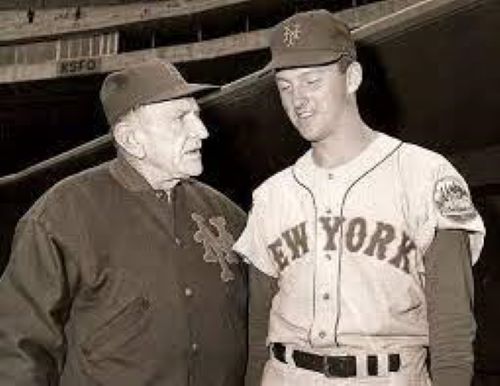 Casey Stengel and Bill Wakefield, 1964. Casey Stengel and Bill Wakefield, 1964. Fifty-seven years go fast. I was listening to the Mets’ game the other night, when a sturdy young pitcher named Tylor Megill gave up a grand-slam homer to the fourth batter in the first inning. Four up, four in. Suddenly, the Mets’ broadcaster was talking about first-inning grand-slam homers, and I heard the name of Bill Wakefield, now an email pal, but in 1964 a rookie pitcher out of Stanford, enjoying the heck out of the one year he would have in the major leagues. That year, Wakefield also gave up a grand-slam -- to Ed Bailey of the Milwaukee Braves. I told my (long-suffering) wife that a friend of mine just had his name called out on the Mets’ radio broadcast – 57 years after the deed was done. “What is it like for a ball player to be remembered for something, that long ago?” my wife asked. Well, I said, there was Ralph Branca, a good guy who gave up a homer to Bobby Thomson,also a good guy, in 1951. And I thought of other ball players who had one really bad moment that never went away. But Bailey’s grand-slam off Wakefield was hardly historic – just rare enough to pop up 57 years later. I shipped off an email to Wakefield, out in the Bay Area. How did he take being back “in the news” again? “I'll have a glass of Chardonnay,” he replied, “and/but, yes I remember it well. “I always admired the guys who answered the tough questions -- and didn't duck out early. “Sure go ahead,” Wakefield answered in two separate emails. “The only downside to telling the old stories is the rolling of the eyes and the ‘Dad, you think you've milked a modest career about long enough?’” from son Ed, 33, D1 pitcher at Portland Pilots and daughter Laura, 31, softball at Boise State!” Then Bill Wakefield, just turned 80, successful businessman, frequent e-mail correspondent, pulled out all the details that many athletes store in their competitive brains.(I’ve heard Chris Evert and Martina Navratilova discuss their epic matches, stroke by stroke.) For Bill Wakefield, it was yesterday: “ 1964 -- We're flying to Milwaukee last road trip of the year. I'm feeling pretty good for a rookie -- lot of games -- 60++++ - pretty good ERA (low 3's!!!) -- 3 – 4, not bad for Mets of that era. On the plane, Mel Harder comes to me – ‘Hey Billy - I know you've been in a lot of games but....’.” (Mel Harder, then nearly 55, had pitched 20 seasons with one team, Cleveland, and was a respected pitching coach with the Mets that year.) “Casey wants to save our starters for the Cardinals in St Louis, ‘cause they‘re in a pennant race," Wakefield recalled Harder telling him. “We're gonna start you on Thursday in Milwaukee! OK?” “Me ---What am I gonna say -- ‘Hey Mel the arm’s a little on the tired side?’ Tell Casey no? “So I say, ‘I'll be ready.’” The game was on Oct. 1, 1964. Wakefield recalls Hot Rod Kanehl, the utility player who shepherded him around the majors for one memorable season, coming up to him: “‘Hey, they're not playing Aaron today.’ So it turns out -- so what !!!! the other guys did pretty well"!!!! Wakefield added: “Hot Rod sees there are 3,000 people in the stands - at best -- and tells me - "Well kid at least a big crowd won't make you nervous.!" Ball-player gallows humor. Nervous or just arm-weary, Wakefield gave up singles to Rico Carty and Lee Maye. Felipe Alou was up next. “In that era, first inning, no outs, runners on first and second, 99% of the time the guy bunts the runners over to second and third. I'm thinking, cover third base line, field the bunt, throw to Charlie Smith at third and get the force. Get the out. “Alou hits the first pitch, one-hopper back to me - the obvious play is double play -- throw to second. I throw to third for the force -- Charlie Smith is standing, looking at second with his hands on his hips -- almost hit him between the eyes -- he drops the ball, bases drunk, I'm in trouble!!! “Rookies get in trouble and they try to throw a fast ball harder and get an out. Veterans throw softer and get a ground ball. Bailey -- first pitch -- I'm thinking two-seam fastball outside, he tries to pull it, ground ball to McMillan, and out of trouble. “It catches too much of the plate -- he goes to opposite field and hits a home run.” Wakefield fast-forwarded to the third inning. “Still a rookie. I'm still in there having trouble -- Walk Carty -- Casey comes out - Rookie question from me – ‘You taking me out because I walked Carty?’ Casey kind of has a quizzical look on his face -- and a smile and says ‘No, I'm taking you out because you've given up 7 runs!!!” Mets lost. “No excuses -- they hit the ball.” More memories: “I'm shaving after the game -- cut my chin - baseball humor -- Jack Fisher: ‘Did you try to cut your throat?’ I laughed." Then Wakefield recalled Joe Gallagher, the Mets’ TV producer, on the Mets’ charter flight that night, to St. Louis: “I said, did you lose some of your audience after the first three innings?” The Mets scared the Cardinals on that last chilly weekend, and Wakefield’s memories come pouring out: “On to St Louis -- Chase hotel -- Gaslight Square ( Hot Rod and I didn't know it -- but it would be our last visit to Gaslight Square!!) Hotel swimming pool stories - old classic hotel. Harry Caray's hang-out hotel. Casey late night in the lobby entertaining!! Westrum laughing at Casey's stories. Lou Niss smoking and watching. Whiskey-slick players file into the single lobby elevator!” My memories jog totally with Wakefield’s. The Chase-Park Plaza was also my favorite hotel on the road. The games were epic, too. “Give 'em a scare,” Wakefield recalled. The gallant original Met, Alvin Jackson, beat Bob Gibson on Friday, and the Mets won again on Saturday. Wakefield pitched in relief on Sunday and so did Gibson, to save the Cardinals’ season. The Cardinals went on to beat the Yankees in the World Series. Kanehl and Wakefield, Butch and Sundance, never played in the majors again, and remained pals until Hot Rod’s death in 2004. “I could have used a few more pitches to be a starter!! Relief -- sinker/slider, OK. Starter needs 4-5 pitches. “ He can pull up the memories of his short career: “The Milwaukee game -- I would paint a different picture if I could. There were 60 other games I would rather recall!! But that's the way it is!” Then Wakefield added: “As long as we're telling stories from 57 years ago -- who's gonna correct me??? -- make sure you also point out that I got Yogi Berra to ground into a double play in the Mayor' s Trophy Game in front of 55,000. Big deal in the era of no interleague play!!” As I told my wife, Bill Wakefield pitched a season in the major leagues, and that is something, ### My thanks to Marianne Vecsey for jogging some grand old memories. The grand-slam game, courtesy of the great website, retrosheet.org: https://www.retrosheet.org/boxesetc/1964/B10010MLN1964.htm Bill Wakefield’s career, courtesy of the other great website: https://www.baseball-reference.com/players/w/wakefbi01.shtml It was impossible to miss the sense of triumphalism in the Mets’ ballpark Saturday night, when Javy Baez made his debut – and clubbed a two-run homer that eventually helped the Mets win. We deserve this – so New York. The Mets’ fans celebrated this show of Steve Cohen’s money as the flashy rent-a-star for our times -- swing for the seats, strike out every-hour-on-the-hour, all condoned by the new analytics. But woven into the new math of baseball is the wholesale transfers of stars – the Cubs’ absolute gutting of players who won the World Series just the other day, or maybe it was 2016. The Nats' dispersal of players who won a World Series in 2019. Is there no loyalty, no sense of continuity, that lets stars grow old gracefully with their teams? Of course not. The players deserve their freedom. Curt Flood suffered for all of them, fighting for free agency, whether they know who he was, or not. You think the Brooklyn Boys of Summer would have stayed together if they had free agency? Imagine Duke Snider going for the big bucks and aiming for the right-field seats in Yankee Stadium before Roger Maris could. Word has just come to me that the Yankees have done it again -- bringing in Joey Gallo and Anthony Rizzo. It's an old habit: In 2012, I did a riff on late-season Yankee acquisitions over the years, with copious help and taunting from the late-great Yankee fan, Big Al, RIP. https://www.georgevecsey.com/home/the-yankees-always-get-somebody As a Mets’ fan – finally outed after decades of trying to disguise it as a sports columnist – I am queasy about the Mets’ move because I have been enjoying the Mets’ rickety hold on first place this season. I never believed the U.S. was getting back to “normal” with the murderous Covid, because I had a sour faith in the grits-for-brains mentality of the Red State no-vaccination crowd. (Did you see the Florida governor who scorns masks for school children because he wants to see the smile on his own child? Where do we get these people?) So, if you have to hunker at home, the Mets have been a nervous pleasure, with a shifting roster of office temps. Who will ever forget Patrick Mazeika, with his ZZ Top beard, a fill-in catcher, specializing in game-winning squibbers, getting his shirt ripped off in the new walk-off celebration? Who will forget Kevin Pillar surviving a pitch in the face, coming back quickly to patch holes in the Mets’ lineup? Patchwork players like Villar and Guillorme and Peraza and Drury helped the Mets stay in first place for roughly three months. The least of it has been the expensive addition of Francisco Lindor, with his .228 batting average, who appointed himself Leader-for-Life, interrupting pitcher-catcher confabs on the mound, inserting himself into every photo op, and now, upgrading his job status, apparently urging the Mets’ fill-in general manager that his pal Javy Baez would be a great addition. Maybe this is Lindor's best contribution to the Mets. But there is a school of thought that the Mets’ brain trust would have been better off finding a front-line pitcher to temporarily replace Jacob deGrom, who now has an endangered Koufaxian aura to him. But they went for the pyrotechnics. One Mets wing of my family paid for seats in Queens Saturday night and watched Baez (a) whack a home run and (b) do his on-the-field post-game interview with apparent joy at being in New York for the day and maybe even the long term. Is Baez a rent-a-star for this season, or will Steve Cohen pay the freight for a long-term contract, like Mike Piazza, who came…and stayed….and became a Mets icon? Or could Baez be like the magnificent Cespedes infusion in 2015? That was fun, too. I fret because Baez imperils my particular favorite Met player, Jeff McNeil, who seems terminally undervalued by the Mets’ front office. McNeil seemed to drink the Analytic Kool-Aid early this season, trying to launch Alonso-style homers, but lately McNeil has gone back to hitting the ball to all fields, with game-winning hits and a recent 16-game hitting streak – oh, and some flashy plays at second base in recent days. When Lindor’s oblique injury heals, he will claim shortstop and his pal Baez will apparently get second base. This leaves Jeff McNeil exactly where? Displacing the slumping Michael Conforto in right field (from which he unleashed a game-saving throw the other night?) What I’m saying is: old fans like me like old-style ball players, particularly the earnest Mets who have been a lot of fun this summer. But Baez certainly made a good debut Saturday night. (This just in: fan makes cheesy catch of home run ball.) * * * Clearly, baseball missed its fans as much as the fans missed baseball. Now we fully understand the pandemic pall of the truncated 2020 season -- no fanatics, no diehards, no leather-lungs, no lunatics, adding color and noise to the play on the field. Never again underestimate fans. Even with the modest percentile of fans allowed in ball parks in states where governments respect the murderous potential of the virus, baseball feels more like baseball this year. Fans with distended facial features and thrashing arms try to summon a rally. Fans stand and applaud a gallant catch, a timely hit, a strikeout pitch by the home side. Even back in our solitary dens, staying safe, we enjoy the game more this time around because some of our fellow fans are out there, doing what we do not yet dare to do – cheering, booing, beseeching, heckling, though their masks. Those fans are there for us. This was apparent Wednesday night as the Mets won their third straight game on a manic homestand. Some fans even displayed mid-season form in the skills of the game. James McCann, the experienced catcher who has already picked a runner off second base – first time in eight years for the Mets! – slugged a long fly ball to left field. Two Phillies made frantic runs to the wall, one digging his spikes into the padding, but the ball was over the railing – and into the glove of a fan in his socially-distanced position. The fan looked like a latter-day Mickey or Willie or The Duke as he softly squeezed the ball. Heroes all around us. Seconds later, a fellow fan applauded the catch, and the TV announcers duly noted the brilliant positioning and soft hands of the civilian. Better yet, somehow the Mets’ TV crew located his wife, Jessica, and their twin sons, celebrating McCann's first home run with the Mets. Last year that family moment could not have happened. Baseball has life again -- despite the mad-professor innovations in majors and minors: the goofus runner on second base in extra innings, the threatened extra foot from the mound to home plate, other silly little gimmicks in the fevered minds of Major League Baseball executives who apparently hate the game for which they are allegedly stewards.
But at least there are fans again – cheering, heckling, groaning, applauding. Some fans can even catch a major-league fly ball. Play ball!
I learned the game from 1962 on, in the company of Casey Stengel, as he managed The Worst Team in the History of Baseball.
Casey's first young star with the Mets was Ron Hunt, tough country boy and master of getting hit by pitches. Casey knew the odds were stacked against the Mets. He said the umpires “screw us because we are lousy,” only he said it more graphically. So his Mets had to do something. He had a club rule – anybody who got hit by a pitch with the bases loaded would make $50. On May 12, 1963, Rod Kanehl, scrappy itinerant, took one for the team – and for his wallet – by managing to get hit by the Reds, scoring (NB: delightful Mets names about to appear) Tim Harkness, with Jim Hickman moving to third and Choo Choo Coleman moving to second. It is said that Rod virtually skipped on his way to first, laughing at the manna from heaven, or Casey, either way. How much would $50 be today? Kanehl’s protégé in 1964 was Bill Wakefield, rookie pitcher. Being a Stanford guy, Wakefield crunched the numbers the other day and figured the windfall for his late pal would be worth between $600-750 today. “We were all making $7K - $10K a year,” Wakefield wrote. Plus, the Mets went on to win the game, no small achievement then, or ever. Casey’s belief that you gotta do something was not lost on Ron Hunt, who used to wear floppy flannel jerseys a size or two big, so they would hang out and absorb a pitch. Hunt even dared the fates by getting hit by Bob Gibson, the surliest pitcher in the universe, and proud of it. Hunt went on to set a modern record by getting hit 50 times in 1971 (for Montreal.) Being around scrappers like Hunt and Kanehl and enablers like The Old Man, I still think it is part of the game to bend the rules until the umps wise up. One ump who may have wised up by now is Ron Kulpa, who ruled Conforto was legitimately hit, and the game was over, but later admitted Conforto had his arm in the strike zone and should have been called out. (Every sportswriter in American promptly dubbed him Mea Kulpa, obviously.) Having been around tough birds like Casey, Hunt, Kanehl and Gibson, I have some advice for the admirable Michael Conforto: in the next two games against Miami, you just might want to hang loose. * * * PS: Talk about mood swings: the Mets were down, 2-1, going into the bottom of the ninth. Howe Rose, on Mets radio, said he knows the mindset of Jeff McNeil, intense second baseman (when management leaves him alone) who was hitless in his first 10 at-bats this season. Take it from an old-timer, McNeil has some Rod Kanehl and Ron Hunt in him. Howie Rose said McNeil would try to pull a home run -- which he did, tying the game, prompting a celebratory bat flip, seen as bad form by opponents these days, Soon came Conforto's bases-loaded heroics. If I were McNeil, I also might want to hang loose in the next two games. * * * Rod Kanehl’s $50 plunking in 1963: https://www.retrosheet.org/boxesetc/1963/B05122NYN1963.htm Lovely profile of Ron Hunt: https://fivethirtyeight.com/features/the-year-ron-hunt-got-hit-by-50-pitches/ 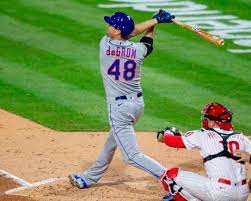 He hits. He fields. He pitches. Not his fault: He just doesn't win. He hits. He fields. He pitches. Not his fault: He just doesn't win. It took exactly eight innings for the 2021 baseball season to veer from glorious to horrendous. This is the lesson for Mets fans: Don’t get too chipper. We learned that in 1962 when the Mets loaded up with aging stars because, as Casey Stengel told us, he was expecting to make a run for the pennant. Ha! Record of 40-120 that year. It’s in their DNA. Two offspring and I were gloating, via smartphone messaging, in the early deGrom innings Monday evening. The Mets had missed the opening weekend because the Nationals had a Covid scare. Now Jacob deGrom was at his brilliant level, down in Philadelphia. * * * NB: A special treat in this article is a comment from JimH – otherwise known as Jim Henneman, longtime sportswriter in Baltimore. Jim assesses the career starts by Jacob deGrom, with the eye of a journalist with respect for stats as well as the emotion of the game. Please see Comments below: * * * Offspring 1 sent a snapshot off the tube, of deGrom throwing the ball past some hapless batter. Offspring 1 soon noted: “deGrom batting 1.000.” Offspring 3 added: “He was amped up.” Offspring 1 replied: “Wow. We may have to watch the Mets all season.” Not so fast. DeGrom threw 77 pitches in six scoreless innings and the three familiar TV broadcasters were at their best, attuned to his every pitch. But then there was a sighting of deGrom pulling on his warmup jacket and departing the dugout. Foreboding in the universe. We know how these things end. Before long, a collection of new culls and rejects was trooping out to the mound to collaborate on a 5-run eighth inning, with a defensive sub making a brutal error, and the Mets soon lost, 5-3, bringing us back to the defeatism from 1962 that is necessary to root for this team. New owner. New superstar. New faces in the bullpen. But same old rage. I’m sure there are fans of other teams out there -- in the only sport that plays every day, pandemic excepted -- who know instant disappointment. But Mets fans feel it is our birth curse. Jacob DeGrom is probably the best pitcher in baseball right now. He has won only 70 games in his career because a collection of geniuses has decided that even the best pitchers must be coddled and protected. In his short career, he has left a game 31 times with a lead that would be squandered. How does he not display the rage that bursts from Mets fans? A former Met I know, emailing sometime in the middle of the night, added his professional reaction to deGrom’s quick hook: “I know. I know. Protect the arm. Limit first start to 6 innings. We traded to get strong bullpen guys! “But opening day loss. 77 pitches! Wasted effort again. 31 times to the guy!! “Time for a little old school. Leave the guy in!!!????” Now the question is: whom do we blame for this oh-so-Metsian loss? Is it the fault of the analytics types who postulate that pitchers lose their edge the third time around the lineup? Is it the fault of a novice manager who doesn’t want to be remembered as the genius who burned out the star pitcher on a windy opening night in Philly? (The same young manager who somehow kept Dom Smith from hitting even once on opening night? Are the Mets suffering from a new ownership and a front office that has once again been assembled on the fly? I’m still repelled by having watched the Tampa Bay manager yanking his best pitcher in the last game of the 2020 World Series because, apparently, that is the way the game is played these days. Our little family web chain went all sour among us: Offspring 1: “We were all in!!! And now this!!” Parental Unit: “I hate this season.” Offspring 3: “Winter’s back.” I love this game. I hate this game. All on the same night. 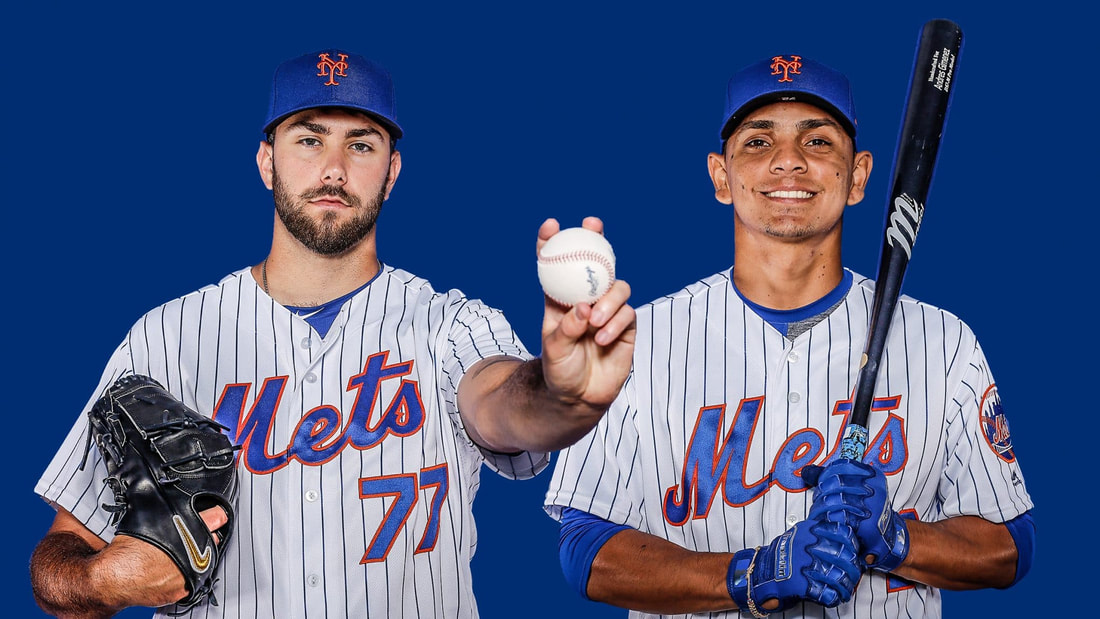 Never heard of David Peterson or Andres Gimenez until they enlivened this "season" Never heard of David Peterson or Andres Gimenez until they enlivened this "season" With absolutely no regrets, I faced the end of the “regular” baseball season, not that anything has been regular about it. The Mets lost Saturday afternoon, and were eliminated, but I have no complaints. . Baseball has done well enough by me this summer. In a terrible time, baseball kept me reasonably sane, in a baseball-fan kind of way – that is, stomping upstairs at 10 PM, gritting the words, “It’s over. They stink.” The “season” came at just the right time – when I figured out we weren’t going to take a drive or visit our grown children or hug our grandkids or go out for dinner or return to the city, my home town, until this poor bungled country figured it out. For entertainment, for escapism, I would watch nearly 60 games’ worth of overmatched pitchers, erratic hitters, outfielders turning the wrong way on fly balls, base runners stumbling into outs, a catcher who couldn’t catch -- and that was only the Mets, the only team I follow. I don’t watch the Yankees (nothing personal, I’ve gotten over my tormented youth, plus Aaron Judge is one of my favorite players), and I cannot stand network baseball, with its overload of gimmicks and just-learned drivel and bland “experts.” I watch only the Mets, or listen to them, and it got me through two months. Besides, what were the alternatives? --Following the smokescreens of a crooked and deranged President? --Obsessing over a pandemic that remains unchecked in an inept "administration?" --Keeping up with merciless hurricanes and fires? I kept to the high road the first few months of the pandemic – reading good books, listening to classical music, watching National Theatre re-runs from London, keeping up with family and friends. But when baseball gave it a try in mid-summer, I devoted myself to the Mets my team since 1962 (even if I had to feign neutrality while covering baseball.) In a sick way, the Mets were fun this year, even as their pitching crumbled and Pete Alonso had a sophomore jinx for the ages. 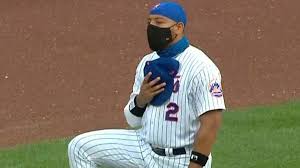 Dominic Smith takes a knee Dominic Smith takes a knee As a fan, I enjoyed Jacob deGrom, the master, and somebody named David Peterson who finished with a 6-2 record Thursday night, as a rookie. I watched Jeff McNeil embarrass the analytics wizards who do not value a fiery throwback, a contact hitter who plays four positions. It was a joy to watch Andrés Giménez, 22, show speed and savvy and great hands whenever they would let him play. Time is on his side. It was also delightful to watch Dominic Smith blossom into a clutch hitter and get to use his glove at first base, and he learned to be a decent left fielder. But most of all, in a time of social awareness, as Blacks kept getting knocked off, Smith knelt to express his concerns, and wept with emotion. 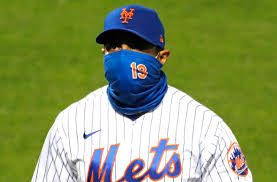 Luis Rojas seems to have a grip Luis Rojas seems to have a grip . enjoyed watching the calm eyes above the mask of Luis Rojas, the accidental manager -- he's Felipe Alou’s son; that told me a lot. I tried to ignore the counter philosophy that said we should avoid this goofus version of a season – 60 games, a tie-breaker gimmick in extra innings, 7-inning games in doubleheaders, no pitchers hitting in the National League, and, worst of all, no fans. I heard baseball people say they are just beginning to appreciate the fans. Really? Just now? The other day, I read an article by Tim Kurkjian of ESPN, the writer-commentator who knows the sport, lamenting a baseball season without “fun.” Tim is terrific, but I want to say that in my masochist world, “fun” involves suffering. Fun? I was a Brooklyn Dodger fan in 1950 when Richie Ashburn threw out Cal Abrams at home, and in 1951 when Bobby Thomson hit the home run, and 1956 when Don Larsen no-hit the Dodgers. Was any of that fun? I missed it. The real “fun” of baseball is thinking along with the participants and the commentators. I know more about the game since I retired and have been able to watch and listen to Gary and Keith and Ron, plus Howie on the radio, even though this year they did not travel with the team but made their calls, as well as possible, off the TV in an empty Mets’ ballpark. Hard for them and the audience, but it was still a game. With the Mets not qualifying for the playoffs, I don’t plan to watch the long 16-team slog to a “World Series” but I might be a backslider I’m liable to catch the occasional soccer game in the winter months but I stopped watching football and basketball and hockey years ago. College football? I never had respect for the ugly alliance between colleges and football, and now the Pac-12 has joined the other major conferences in risking the health of the so-called students who will play during Trump's pandemic. I think voters will get rid of this vile and ignorant President, and maybe more Americans will wise up about how to slow down this pandemic even before a legitimate vaccine arrives. Speaking of change, prospective buyer Steve Cohen says he will bring back Sandy Alderson to run the Mets. This must mean Alderson's health is stable. But what does it mean for Brodie Van Wagenen, the agent who has been running the Mets the last two years? In the meantime, the Mets got me through a long hot summer, and that is something. *** Tim Kurkjian’s knowledgeable view of this weird season: https://www.espn.com/mlb/story/_/id/29898470/this-fun-how-everyone-baseball-navigated-very-different-season. I was trying to write something about Tom Seaver that had not been said in the past few days. Then our-son-the-newsman texted me on Sunday afternoon: “Omigosh, now Lou Brock.” Immediately, immediately, I thought of a falsetto voice in the cramped old Busch Stadium clubhouse, piercing the hubbub of a great team: “Chris going to America! Chris gonna find Lou Brock!” That was Bob Gibson, the crabby but funny straw boss of the Cardinal clubhouse, emitting the punch line of Flip Wilson in his epic routine about Christopher Columbus: Queen Isabel -- Elizabeth Johnson, that is -- is underwriting the mission of Columbus, and she is down at the dock cheering him on -- in American Black patois: “Chris going to America!” the queen shrieks. “Chris gonna find Ray Charles!” (*-see below) By inserting Brock, Gibson paid tribute to the player whose legs and brain and will helped the Cardinals win three pennants in the mid-60s, and for a while made Brock the all-time stolen base leader. Lou Brock, who died Sunday, was the final piece of the 1964 Cardinals, coming over in a one-sided trade with the Cubs. (You got it: for Ernie Broglio.) He gave the Cardinals one more star to go along with Gibson, Bill White, Curt Flood, Dick Groat, Tim McCarver and Ken Boyer, one of the great teams (and clubhouses) I ever covered. Brock also gave Stan Musial one of his favorite punch lines during the World Series of 1964. Musial had retired after the 1963 season, and the Cardinals landed Brock in mid-June of 1964. Why were the Cardinals celebrating in October of 1964? “We finally got a left-fielder,” Musial would say with his giggle. Brock did not come from nowhere. While the Mets were still waiting for The Youth of America, in Casey Stengel’s prophecy, the Cubs already had talent but negated by bad management. In 1962, the Cubs promoted Brock to the majors, to his surprise. On His first at-bat in a Sunday doubleheader in the Polo Grounds, he lofted a drive that landed directly on top of the bleacher fence -- only the third player in history to hit a home run into those bleachers. “You won’t ever do that again!” shouted Alvin Jackson, the Mets’ lefty, who gave up the homer. Brock agreed, he never would. (Two college men from the South they became friends.) Brock soon acquired the reputation of an under-performer who was skittery in left field. The Cubs gave up on him in 1964, and the Cardinals’ manager, Johnny Keane, did the same thing with for Brock that he was doing with Gibson. (“I had a commitment to his heart,” Keane once said about Gibson, one of the most beautiful statements I have ever heard from a coach or manager. Overlooking old racial stereotypes was part of Keane’s life vision.) After the Cardinals won the 1964 World Series, I had dinner with Brock in Chicago, for a profile of him for Sport Magazine. “They needed a lift,” Brock said. “I had a history of not being able to help anybody. I think the ballplayers felt this. Nobody said anything to me but I could feel it.” By 1967, Brock was an established all-star who had never seen Seaver closer than 60 feet, 6 inches. Their first encounter in the National League all-star clubhouse is a wonderful story that Seaver told many times over the years. (The Brock-Seaver part is about 60 seconds into it:) Brock and the “kid” eventually faced each other 157 times, more than either faced any opponent. The record shows that Seaver got the better of Brock. (But Brock played in three World Series.) Many years later, Brock made a great contribution to the Mets, without meaning it. He was a soothing older teammate to a hard-driving young Cardinal named Keith Hernandez, telling him to relax and play his game. When Hernandez became the infield straw boss of the Mets in the 80’s, he often referred to Brock’s kindness and encouragement. I am sure Hernandez is gutted today, because his mentor has passed, after losing a leg to diabetes years ago. Two giants, a few days apart. I was lucky to be around the Cardinals and Brock, just as I was proud to cover Tom Seaver on some of his epic days. I can’t claim I knew him well, but I had plenty of opportunity to observe. One of my last impressions was Seaver’s inner Marine joining Manager Gil Hodges to give the Mets’ self-image a posture adjustment in the late 60s. I wrote about it last year: https://www.nytimes.com/2019/03/27/sports/baseball/gil-hodges-tom-seaver-mets.html?searchResultPosition=1 In this weird, truncated season, these two Hall of Fame players, linked by familiarity in their careers, are linked again. *- Here's the origin of the Columbus/Queen Isabel (Isabel Johnson) /Ray Charles riff. This is how bad it got bad at the Mets’ home opener on Friday:
When Edwin Diaz walked into the game, the cardboard mockups of real fans began to head for the exits. I swear. Edwin Diaz! Aaagh! Not him again! Cardboard people began checking with the baby-sitter on their phones, began edging toward the rest rooms, began filing out toward the parking lots and the No. 7 elevated train – to get the hell out of there before Diaz torched the place, again. Eight innings into the first game of this bizarre season -- a season I am not sure should exist, given the pandemic -- I experienced the mini-terror of the fan – with no ticking clock, with three massive last outs to achieve. This is the same Edwin Diaz who was acquired by the Mets last year and had one of the worst years ever for a so-called relief pitcher. Fans groaned when they saw him flexing in the bullpen. On Friday, as rigid and lifeless as the fans appeared, they knew a terrifying situation when they saw it. It was a classic Mets’ game of recent seasons, Before Covid. Jacob deGrom pitched five crisp innings, looking like the two-time Cy Young Award winner that he is, reaching his pitch limit, and turning the game over to the bullpen. All those vividly-colored one-inch-thick fans recognized the script – the paralysis of the Mets’ hitters whenever DeGrom pitches. This opener had a subplot – the presence of Freddie Freeman for the Braves, after a terrifying siege with Covid months ago, when he admittedly felt he would not live. Later, he recounted his experience to Nick Markakis, a teammate, who promptly decided to sit out this season. Freeman is back, one of those admirable opponents that even some Mets fans, in all their bilious loyalty, can respect. He monitored first base, and seemed to greet the Mets’ Brandon Nimmo with a tap of his glove after both of Nimmo’s singles. This camaraderie would not have gone over back in the day, when an opponent would have fallen to the ground and called for the umpire to eject Freeman for menacing with his microbe-laden glove. In these nicer times, it was good to see Freeman’s hawk-like features back on the field. The Mets got a post-deGrom run when Yoenis Céspedes clubbed a massive home run, and Diaz induced terror in Mets fans by striding onto the field, but somehow he procured three outs, around a walk (to Freeman), to secure a 1-0 victory, and the Mets remained undefeated 24 days into July. This patchwork “season” may or may not last 60 games. But on Opening Day, with thousands of faux fans planted in the seats, a pyromaniac “relief” pitcher terrified the fans, in whatever form. I know it is hypocritical of me to worry about spreading the virus -- (the Mets abandoned all pretense of safety when they greeted Cespedes in the dugout)-- but baseball, in this strange form, is back. Cardboard spectators stared vapidly from behind home plate, their expressions never changing as the Mets and Yankees committed something akin to baseball.
This was the ambiance at New Shea Saturday night as Major League Baseball introduced Covid-Ball, a makeshift version of the great American pastime, or what used to be. Cruel boss that I am, I assigned myself to stick it out as a preview, or warning, of what this truncated season will be, if it lasts its threatened 60 games. (Some wary big names have already dropped out for this season; others are trying to come back from a Covid attack. To be continued.) This was only an exhibition, spring training in mid-July, and there was to be another one at Yankee Stadium Sunday evening before the “season” opens late in the week. I will tell you up front that my biggest thrill of the night was seeing the aerial view of Queens, my home borough – the globe in the park, a glimpse of the wonderful Queens Museum, the No. 7 elevated train gliding through the neighborhood, as sweet as a gondola through Venice. Oh, my! I am so homesick for Queens! I thought of the joys within a mile or two of this sweet spot – my friends and the heroes at Mama’s deli on 104th St., other friends at the New York Times plant, just to the east, the food and the crowds in downtown Flushing, the Indian food in Jackson Heights, and so on. I miss all these at least as much as baseball. There was a strange hybrid form of baseball taking place in New Shea. Yankee manager Aaron Boone was moving his jaws inside his soft gray mask, either chewing something or talking a lot. The first home-plate ump (they mysteriously rotated during the game) had some kind of plexiglass shield inside his mask, to ward off virulent Trumpian microbes. I was mostly watching the Mets’ broadcast, with good old Ron and good old Keith two yards apart in one booth and good old Gary in a separate booth, but their familiarity and friendship came through. Welcome to this strange new world. Later I switched to the Yankee broadcast and realized Michael Kay and the others were not in Queens but were commenting off the same video we were seeing. Not sure how that will work out during the season. Early in the game I learned that the Toronto Blue Jays will not be able to play in that lovely city this “season,” for fear of being contaminated by the virus the viciously bumbling Trump “government” and block-headed Sunbelt Republican governors have allowed to rage. I don’t blame the more enlightened Canadian government – but a few days before the season opener? The Jays will apparently play in Buffalo, creating all kinds of logistical horrors for anybody in Ontario with Blue Jay business. The highlight of Saturday’s exhibition was Clint Frazier, the strong-minded Yankee outfielder who plans to wear a kerchief-type mask during games, including at bat. Does a mask impede a batter’s reaction to a fastball, up and in? Maybe. But Frazier unloaded a 450-foot homer into the empty upper deck – (Sound of summer: Michael Kay: “SEE-ya!”) -- and some teammates in the dugout flashed masks in tribute to Frazier. I obsessed about those cardboard fans behind home plate. The absence of real people takes away one of the peripheral joys of watching a game – demonstrative or even annoying fans, the occasional celebrity, and, yes, I admit, women in summer garb. Will these faux fans become part of lore? Will they be rotated, replaced by new faces during the “season?” Just asking. Finally, there was the recorded crowd noise, an apparently steady hum. No pro-Met chants, no anti-Yankee jibes, just background, like the roar of the sea, I caught the last inning on the Mets’ radio broadcast, where good old Howie was speculating that the home-team genies in the control room were raising the sound a bit when the Mets were rallying. I stuck it out because I had assigned myself to “cover” the event. But I wondered about the reaction of my pal, Jerry Rosenthal, one-time all-conference shortstop at Hofstra, two-year Milwaukee Brave farmhand, and now lifetime baseball purist and authority. How did Jerry like the ersatz game? He texted: “Watched one inning of the game. I am now watching ‘The Maltese Falcon” for about the 25th time. That should tell you something!” Yes, it does. Play “ball.” I’m getting the feeling that baseball is negotiating itself out of even an abbreviated season.
And maybe that’s okay. I’m not sure anybody should be doing something as unimportant as playing sports, what with the murderous virus still very much floating in the air we breathe. Then again, I truly miss baseball. I can’t watch old games on the tube, just can’t, but I can read about them. I just read a book about my favorite team from somebody who was “in the room where it happened.” (From “Hamilton”) That would be Jay Horwitz, owner of the largest head this side of Mr. Met, the mascot for whom he is often mistaken. The book is entitled “Mr, Met: How a Sports-Mad Kid from Jersey Became Like Family to Generations of Big Leaguers," issued by Triumph Books. Horwitz was the head public relations person for the Mets from the time of Joe Torre through the time of Terry Collins (both of whom he openly admires.) As Jay tells it, confident managers like Davey Johnson relied on Jay's ability to keep a secret, and explained personnel moves or strategy decisions, counting on him to put a positive spin on them. The book is full of examples of Horwitz offering advice to players, particularly the younger ones, moments after a game, before the vicious bloodhounds of the media came yowling through the clubhouse door. Let me attest that Jay Horwitz has not yet in his life given any journalist (or at least me) a truly newsy “scoop.” He made his rep as a college PR man who could get Fairleigh Dickinson in the sports pages, in the waning days when print dominated sports coverage, and he was not about to divulge anything damaging or derogatory about any Met that ever lived. Therefore, he had the run of the place. For example: Horwitz was in the locker room on the night of Oct. 25, 1986, when the Mets and Red Sox played the sixth game of the World Series. When the game went into extra innings, he knew he had to get to the Mets’ clubhouse to console or congratulate the players but also to monitor the post-game madness. He was sitting in Davey Johnson’s office with Darrell Johnson, one of the Mets’ advance scouts, watching on TV as the Red Sox scored twice. Then Wally Backman flied to left and Keith Hernandez flied to center. (Anybody who was there will never forget the Shea Stadium scoreboard prematurely flashing congratulations to the Red Sox.) A minute later, Hernandez burst into the clubhouse, not about to gawk like some tourist as the visitors celebrated in the Mets’ house. Then the three of them watched Gary Carter, Kevin Mitchell and Ray Knight single to bring the Mets within a run “I’m not leaving my chair,” Hernandez declared. “It’s got hits in it. It’s a hit chair.” Most ball players believe that stuff. Then Mookie Wilson had perhaps the greatest at-bat in the history of the Mets and as the Mets roared in from the field, Jay Horwitz “was in the room." In bad times -- and for the Mets, that's most of the time -- Horwitz suffered and sighed so visibly the players treated him as one of them, including when they divided up the World Series swag. This is the annual autumnal test of character, with some teams generous to people who serve them, and some teams not so much. The club was passing out $4,000 bonuses to department heads but the players voted Jay in for a full share -- $93,000 -- the same amount as Hernandez and Carter and Mookie, a highly unusual gesture. He was hesitant to break tradition, but says players like Mookie insisted he take it. Then Jay consulted the person who truly had his back – his mother, Gertrude. “I didn’t raise a schmuck,” she told her son. “Take the 93.” The share was a big payoff for Jay Horwitz but it sounds as if he had a payoff every day he reported to work -- a loyal PR man, as unathletic as they get, who has gone through life with only one eye working due to glaucoma at birth. A bachelor, he has put his loyalty into the Mets since 1980, and the players (often the stars like Tom Seaver or John Franco) often showed their love by dousing him from the whirlpool hose, cutting his tie, slipping greasy foodstuffs in his jacket pocket as he slept on the team airplane. Jay still seems to beat himself up that he did not do enough to steer young Doc Gooden and young Darryl Strawberry, who found ways to self-destruct early and often. He does not go into details, but he trusts the reader to know them. After the 2018 season, the Mets’ new front office created a new job as vice president of alumni relations; Jay now brings back old Mets, some immortal, some transient, for some feel-good events, plus he still gets to report to the ballpark every day. In the absence of baseball, this sweet book shows the beating heart of a sport that normally takes place every day. Jay Horwitz and loyal fans (I outed myself as a Mets fan after retirement) may have a long wait to root and suffer during a game, any game. The Horwitz book gives a glimpse of the daily agony, unique to baseball. Oh, my goodness, it was 20 years ago.
Today, the NYT reprinted an article I wrote 20 years ago today, on the Mets-Cubs league game in Tokyo. It was a pleasant surprise to be back in the paper and be reminded of a great trip and how much I love visiting Japan. This, at a time when there is much sadness at postponing the Tokyo Olympics to next year. ごめんなさい Gomen'nasai (I am sorry) The article jumped out of the Monday sports section – about Benny Agbayani’s grand-slam, pinch-hit homer in the 11th inning that defeated the Cubs. /www.nytimes.com/2000/03/31/sports/baseball-against-the-odds-agbayani-gets-mets-home-even.html?searchResultPosition=1 It was the end of a grand assignment – two Mets exhibitions around Tokyo, plus two official games, showing me how much the Japanese fans know about baseball, and America. It kicked off so many memories: ---Japanese fans booing good-heartedly when activist Mets manager Bobby Valentine (with his love and knowledge of Japan) had Sammy Sosa walked intentionally with first base open. “Japanese fans never boo the manager for this,” a Japanese reporter told me. “But they know it is normal in American baseball.” How cool – like young couples on Friday date night, going to TGIFriday’s glittering outlets all over Tokyo, for ribs and fries. ---Standing outside the Tokyo Dome that week, watching fans congregate and spotting a woman wearing a Mets uniform with Swoboda 4 on the back. Haruko told me, in quite good English, that she was a Mets fan – had seen a Nolan Ryan no-hitter in the States (for the Angels) and in fact had stayed with Ron and Cecilia Swoboda in New Orleans. ---The great Ernie Banks, retired by then, sidling up to me around the batting cage and repeating his iconic phrase: “Let’s play two.” ---How I spotted Masanori Murakami, the first Japanese national to play in the American majors – I covered that game, too, in 1964 – and re-introduced him to the Mets’ roving pitching coach, Alvin Jackson, who was his opponent in that epic debut. They laughed and shook hands and chatted, so comfortable with each other, as old players are. Alvin passed last year; I was so honored to have shared that moment with him. https://www.nytimes.com/2000/03/31/sports/sports-of-the-times-murakami-will-always-be-first.html?searchResultPosition=1 My other memories of that trip are less baseball-centric: ---Zonked on jet lag, taking my wife on the Tokyo subway, telling her how easy it would be, and emerging in sunny Ueno Park for a nice stress-free walk (and subsequent first meal in a neighborhood) ---Being driven from bustling Tokyo to a famous shrine by our former Long Island neighbors, Fumio and Akie, the nicest couple. Originally from Osaka, Fumio did not know every inch of Tokyo – does anybody? – but he relied on a novelty GPS built into his dashboard, and he negotiated all the tight little turns and ramps to get us on a freeway to a leafy shrine. --- Salarymen – and women – stopping to offer us directions when we appeared baffled by the odd numbering systems. --- After the baseball work, visiting historic Kyoto, where a woman addressed my wife in French; she had lived in France and loved to use that language. My wife, who speaks some French, sat on a bench and they chatted for an hour, about La Belle France. ---And finally, since it was 20 years ago this week, having people in Kyoto apologize to us because the cherry blossoms were late. In this grim spring, I think of all the places we cannot go, but when I think of baseball…and Japan….and friends….and spring...and having been privileged to go places and write stories, the day seems better. 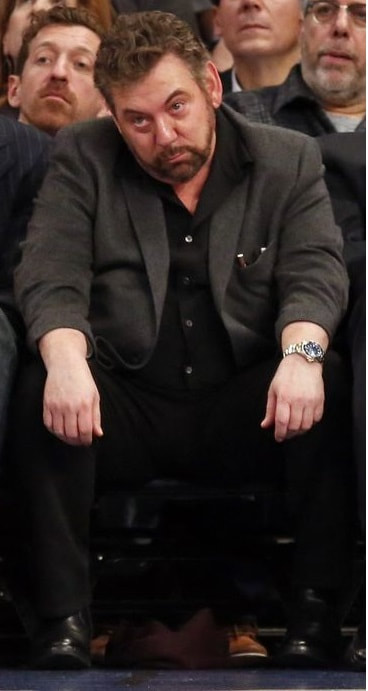 It's all the Knicks' fault that Jim Dolan feels like this most of the time It's all the Knicks' fault that Jim Dolan feels like this most of the time A petulant scion with no known talent? No, no, come back, I swear, this is not about “politics.” Rather, this is about two New York teams in a state of flux. The Knicks are run by Jim Dolan, son of the man who built a cable empire that acquired Madison Square Garden. Dolan is the sourball who slumps in the front row, glowering and issuing occasional “off with their heads” orders toward coaches or even paying customers who criticize. The Mets are owned by Fred Wilpon, a real-estate developer, whose son, Jeff Wilpon, manages to upset almost any baseball person in the Mets’ system – and, apparently, his relatives. The Knicks have responded to the worst start in club history by firing the hapless coach, David Fizdale. From what I read, the problem goes way beyond the current stock of leftovers and dubious prospects. (NB: I stopped watching the Knicks soon after Dolan broke up a decent team to acquire fire-it-up Carmelo Anthony – the signature move of Dolan’s tempestuous stewardship.) The truly amazing thing to me is that the Garden is generally packed with paying customers, in a city that prides itself on knowing great basketball. Are these people hanging on to their tickets in case Clyde comes back to pick apart a defense or Oak shoulders opponents into the first row? Both the Knicks and Mets have been under the scrutiny of the Times in recent days, with Michael Powell issuing the most rational solution to the Knicks’ problem: Dolan should fire himself. Meanwhile, the Mets’ owners are easing themselves out, The Mets are in the process of being sold to Steven A. Cohen, a hedge-fund guy with tons of money, even after paying a nearly $2-billion fine (That’s with a B, as in Bonilla) for mischief, all committed apparently by underlings. I will not hold my nose at the business history of Steven A. Cohen. Really, how many rich guys can withstand scrutiny? My concern here is that Mets fans seem to be already celebrating the money they expect the next owner to toss around. I am not confident that Cohen can bring any more actual baseball acumen than the Wilpons have. Fans should remember that the franchise has spent scads of money on occasion – Mike Piazza being the best example, plus locking down Jacob DeGrom recently. Since I have owned up to being a Met fan in retirement, I have suffered but also enjoyed -- Collins, Alderson, Minaya, even the last painful years for David Wright, Murph's great year, admirable old pros like Granderson, Cuddyer, Cabrera, plus an adult broadcasting crew so superior to network blatherers. Sure, I quote Dante every March (" Abandon all hope, etc.") but the Mets have kept me going, agita and all. Plus, we are all in this together: Remember how many fans and reporters (including me, mea culpa) begged the Mets to retain Yoenis Céspedes, who was demonstrably falling apart before our eyes even before he stepped in a hole last spring, or whatever the story is. True, the Mets have bungled by hiring managers like Art Howe and Mickey Callaway and a few wrongo general managers. I am not so sure about the reforming agent, Brodie Van Wagenen, who is “running” the team, as of this morning. 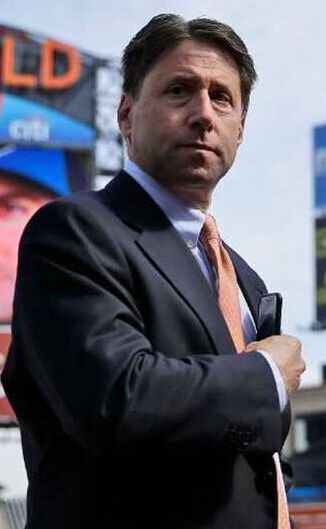 Jeff Wilpon Jeff Wilpon Why are the Wilpons selling the Mets? The other day, the Times wrote that the Mets had the shorts due to the Wilpons’ past reliance on their money guy, one Bernard L. Madoff. I know Fred Wilpon and his brother-in-law, Saul Katz, minimally, and do not think they would have tied dozens of family members into accounts with Madoff if they had known he was as crooked as he turned out to be. Iris (Fred's sister) and Saul Katz are the very same couple behind the Katz Institute for Women's Health at Northwell Health. Fred Wilpon is a pretty private guy, loyal to some long-time Mets employees, frequent host to military vets, plus friendly with Sandy Koufax, his baseball teammate from Lafayette High in Brooklyn and one of the princes of this city. Any friend of Sandy Koufax…. But the family has a problem these days. From what the Times writes, the next generation of Katz scions does not want to be linked with Cousin Jeff. Naturally, Fred Wilpon is loyal to Jeff, but now the franchise must be sold. . I can understand fans who think the current ownership has been a bad steward for the franchise. That is normal for fans. Look at what the current Red Sox ownership has done. But was Boston's rise all about money -- or very much about good management and sound judgment, also? Abrasive heirs are one thing -- but finding owners with more money is not necessarily any kind of solution. Enter, Steven A. Cohen. ### The sale: https://www.nytimes.com/2019/12/05/sports/baseball/mets-steven-cohen.html The Wilpons: https://www.nytimes.com/2019/12/06/sports/mets-wilpons-sale-cohen.html Michael Powell dubious about Steven A. Cohen: https://www.nytimes.com/2019/12/05/sports/baseball/mets-steven-cohen.html Knicks fire Fizdale: https://www.nytimes.com/2019/12/06/sports/basketball/david-fizdale-knicks-coach-fired.html Masochistic Michael Powell has been watching the Knicks: https://www.nytimes.com/2019/12/06/sports/basketball/knicks-dolan-fizdale-fired.html Can a season be satisfying if your team doesn’t make the playoffs?
Anybody in uniform will say no, particularly on the last day of the season, when athletes are shedding that uniform for the last time until “next year” – if “next year” ever comes, athletically. But fans can afford to remember the good times, even as they wish there had been more of them. My team is going home after Sunday but I will take away memories of Dominic Smith's three-run homer that ended the season with a 7-6 victory in the 11th inning over the Braves, who are going to the post-season. There were so many moments like this -- Jacob deGrom’s superlative pitching (with shockingly minimal support) and Pete Alonso’s 53rd homer Saturday evening, giving him the most ever by a rookie. Smith's homer was the perfect way to end a season -- make 'em scream for more. He had missed two months with a foot injury, and spent his time tootling around on a scooter, to take the weight off the mending foot. He was the perfect teammate -- cheering for his mates, including his pal Alonso, who took away Smith's platoon time at first base. But my biggest cumulative thrill this season was watching Jeff McNeil prove himself as a high-end hitter, despite the mental barricades from the analytics nerds in baseball these days. Jeff McNeil’s wrist was broken by a pitch Wednesday night, as the Mets were eliminated from the race. . The wrist will heal, and McNeil has made this a memorable season, in its own bittersweet way. McNeil finished with 23 homers and a .318 average – and was hit by 21 pitches. With his perfectionism and tossed equipment and grimaces and a major league red ass, he was a latter-day Ron Hunt, an escapee from the minors. McNeil is a throwback to hitters who hated striking out, who took what the pitcher gave them, and put the ball somewhere. The Mets brain trust was throwing out suggestions that McNeil did not have the proper “launch arc” to be a slugger in these days of the souped-up ball and televised hysteria when sluggers swat the ball over the fence or skip back to the dugout after striking out. McNeil also played four different positions, switching virtually inning by inning. The fact is, McNeil might never had gotten a real chance with the Mets if Yoenis Céspedes and Jed Lowrie had been healthy enough to play this season. He might be in the minors, or on some other team. Instead, he put bat to ball, and showed up the stat doofs. Day after day, the little triangular Jeff McNeil Fan Club was buzzing on my phone – Jerry, my pal who played infield in the minors, saw McNeil as an alter ego, texting me after the latest opposite-field hit or daredevil catch in the corner. Somebody named Dave would text me with similar raves. Mets fans – like fans everywhere – will look for reasons their team did not make the playoffs. The Mets have one major reason: the bullpen blew 27 saves, three below the league leaders, the Dodgers, who won their division, for goodness’ sakes. The Mets’ major scapegoat is Edwin Diaz, who has blown seven saves and had a 2-7 won-loss record, although somehow it seems much worse. I cannot summon up any malice toward him. He stunk. Are they going to bring back Diaz next year? The real question is whether they going to bring back Mickey Callaway, who stayed with Diaz too long, and the reforming agent, Brodie Van Wagenen, who has been taking on-the-job training as general manager? I don’t want to think about it right now. As a pensioner-geezer, who spent a lot of time watching the Mets, I had misgivings about Robinson Canó but he came back from injuries and was clearly an Asdrubal Cabrera-like leader. Ahmed Rosario improved more than I thought he would. Michael Conforto was earnest and powerful. I liked watching Dominic Smith and Marcus Stroman lead cheers from the top step of the dugout. Wilson Ramos was a liabilty as a catcher but he hit well. Brandon Nimmo still raised his finger to heaven whenever he earned a walk. Seth Lugo was solid in the bullpen. Right now, there is no next year. Thanks to those Mets who made this year enjoyable, if not often enough. * * * (My concept of “wait til next year” comes from the old Brooklyn Dodger annual motto. I remember a sermon by Red Barber, the Brooklyn Dodgers preacher-broadcaster, on the last day of 1950, when I was a tyke. The Dodgers had hoped to tie the Phillies, but Dick Sisler hit a 3-run homer in the 10th and ended the season for The Bums. Barber, on the radio, talked fans like me out of deep mourning by reminding us that you can’t win ‘em all. How did that work out? The next year, the Dodgers’ season was ended by Bobby Thomson of the Giants, in the classic final playoff game.) * * * (Let’s give Major League Baseball some respect for the most restricted playoffs – MLB calls it “the post-season” – of any major pro league in North America. The WNBA allows 67% of its teams into the playoffs. The NBA and NHL democratically admit 53%, MLS 52%, and the NFL us 38% But MLB is a relatively exclusive 33% -- 10 of 30 teams, with two wild-card spots in both leagues keeping marginal teams like the Mets in the hunt until the final Wednesday, making for tense games in September.) |
Categories
All
|


